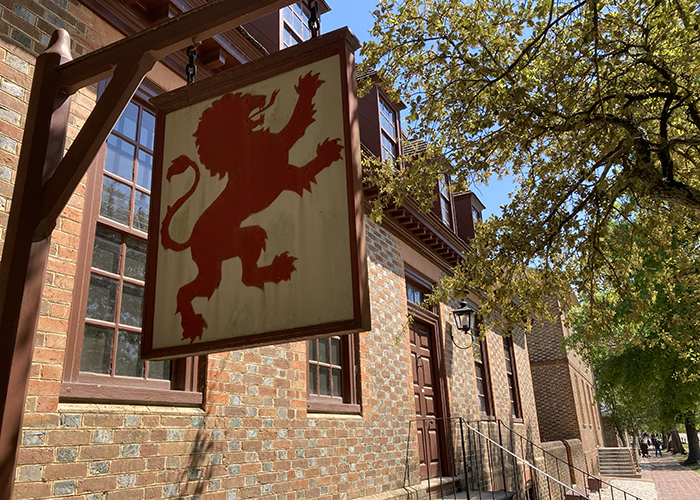 Previous Day |
Richmond, VA → Hampton, VA → Plymouth, NC 271.0 mi (436.1 km) |
 Next Day |
Shove in those shovels, everyone!
Penguin, Jr. and Penguin III are after gold in southeastern Virginia! After they warped into my hotel room last night, I agreed to let them tag along on today’s adventures so long as they behaved themselves, but my flippered friends are very, very determined to fund their quest to find and defeat undead Ernest Shackleton! Because of this, I’d need to keep one eye on the history and one on the penguins!
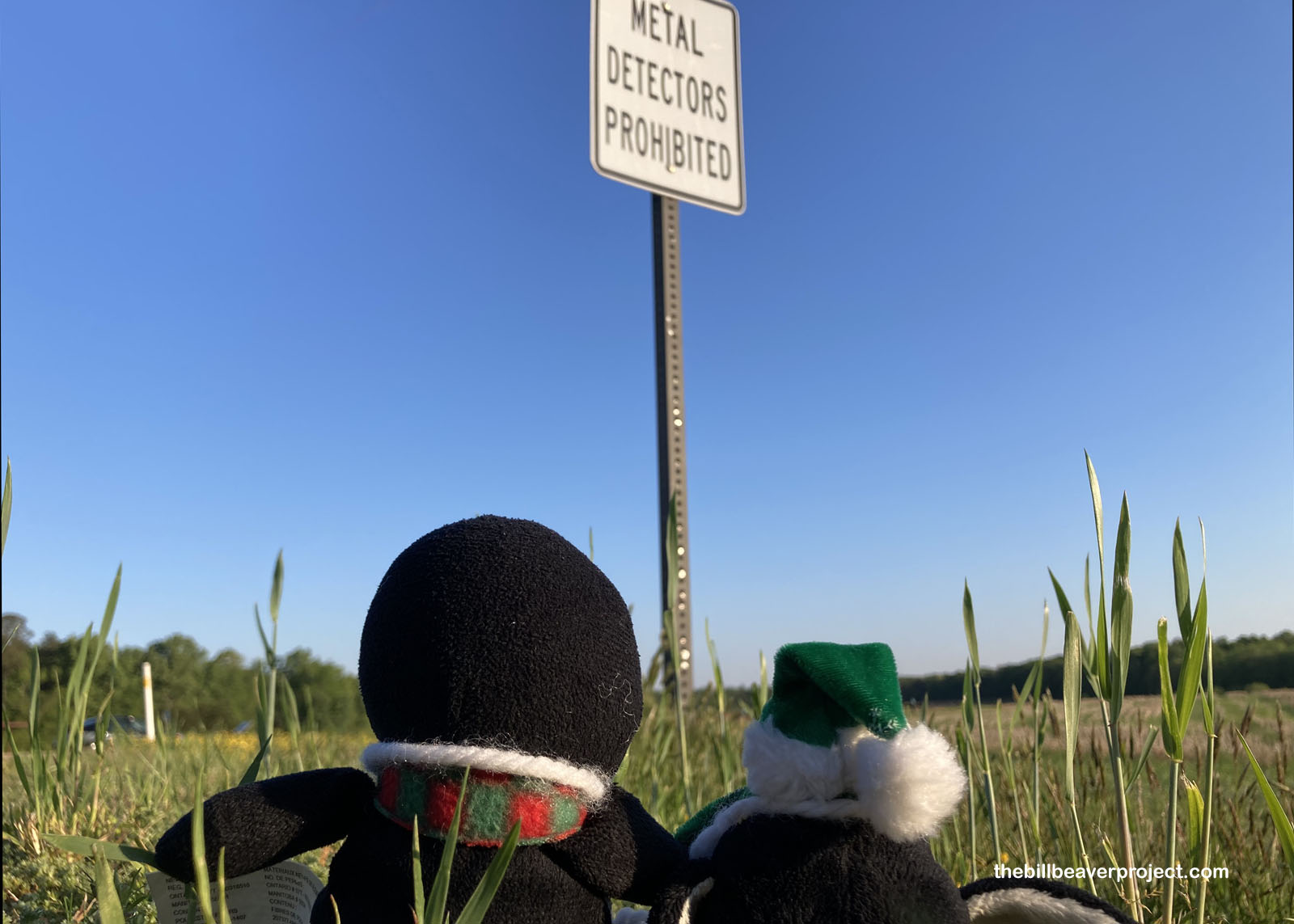 |
Fittingly, our time in Richmond concluded at Malvern Hill, where the Seven Days Battles for Richmond also came to an end! The Union army scored a small victory on this hill on July 1, 1862 but still got pushed out of the Confederate capital because of low supplies and morale! Like the Union Army, the penguins remained low on supplies, but unlike the Union Army, their morale was unshakable!
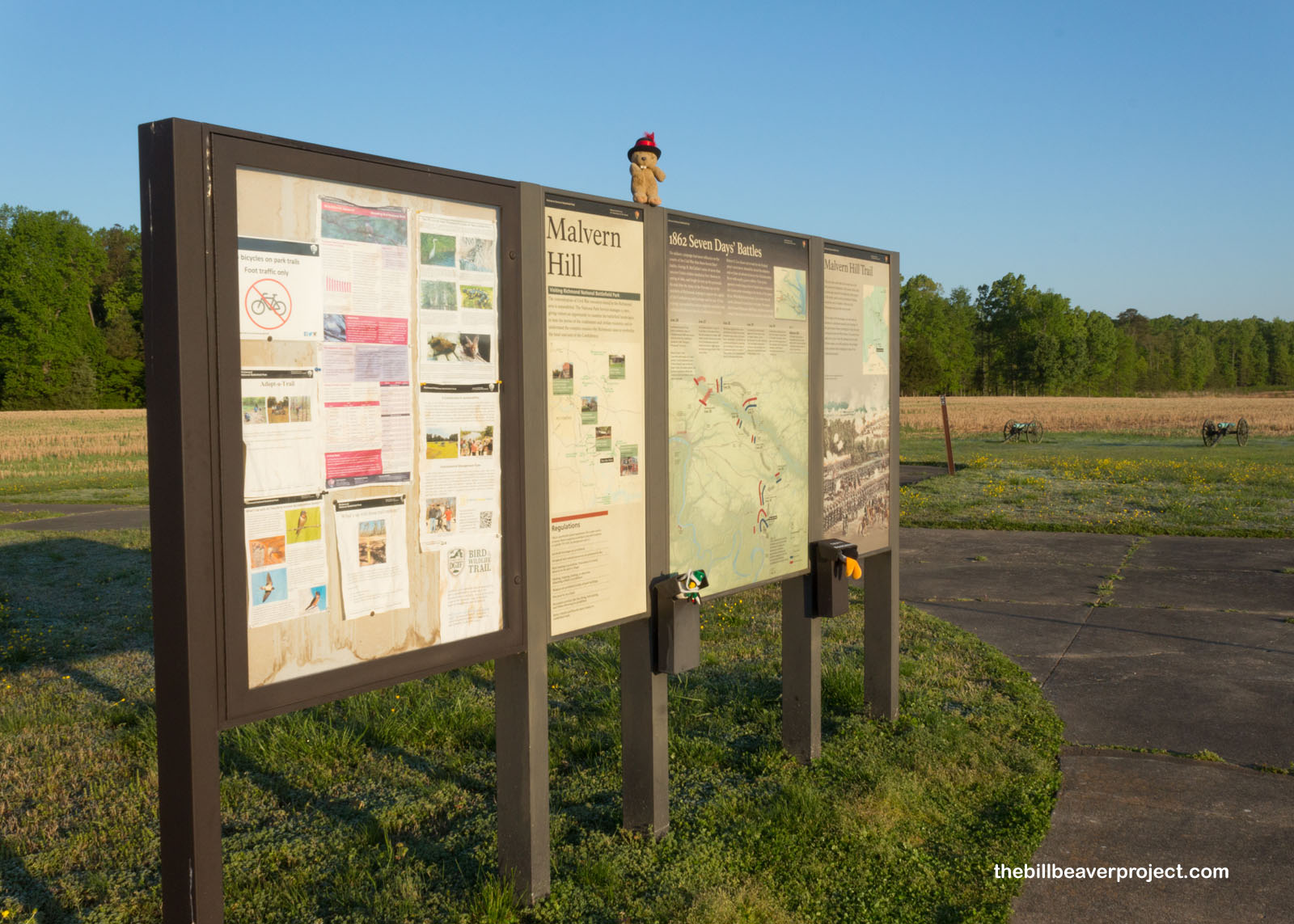 |
 |
This frosty hillside had been a great tactical location; it was just too late in the campaign. General George McClellan had moved too defensively, and both the soldiers and the president lost faith in his ability to act decisively! He was relieved of command shortly after the Seven Days Battles concluded, just like I was relieved when the penguins shouted “Gold!” and began collecting the nugget-colored flowers peeking out of the frosty grass!
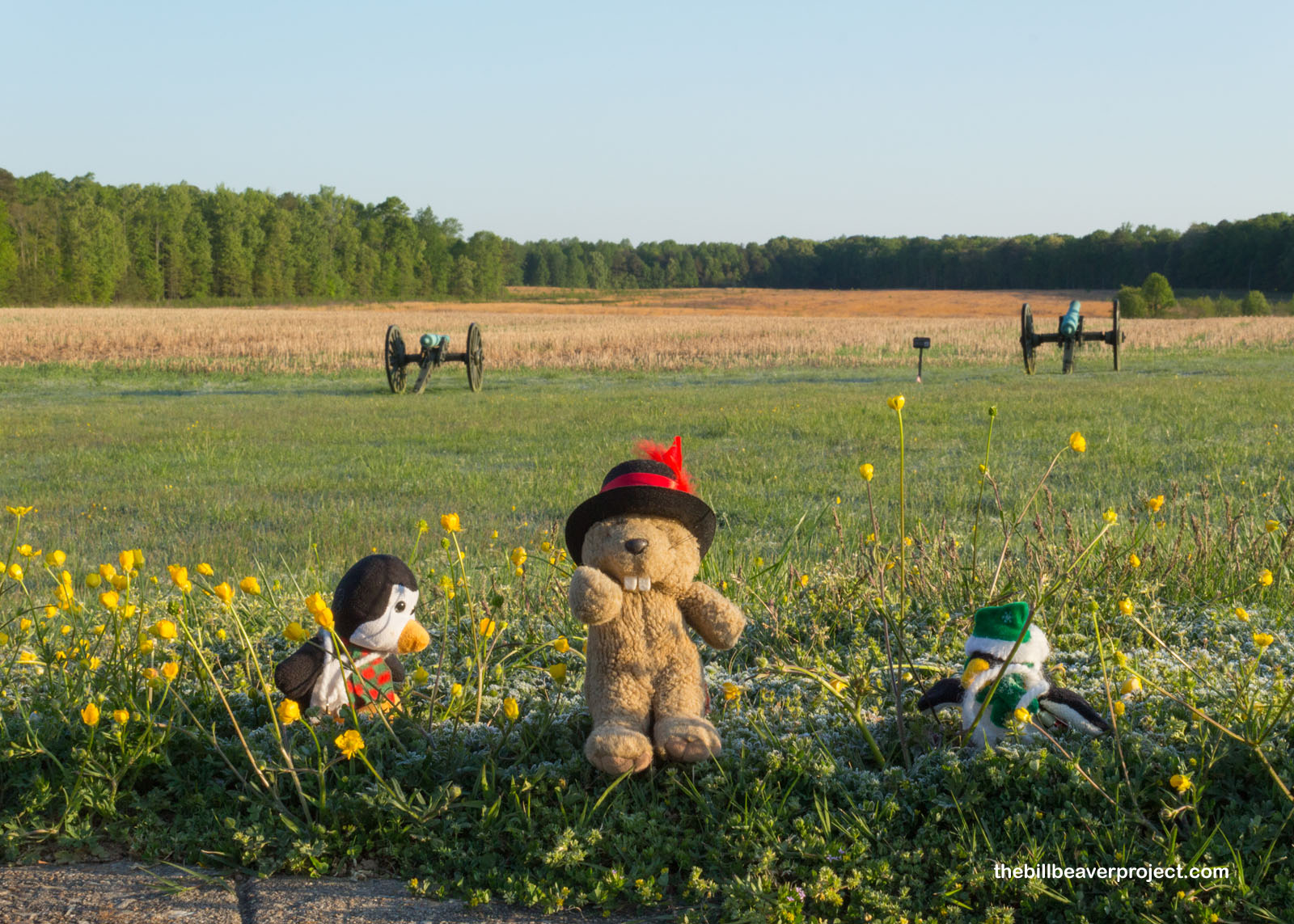 |
The Confederate assault at Malvern Hill launched from this spot, the Willis Church parsonage. As I learned yesterday at Fredericksburg, churches had no immunity against the chaos of war, and this Methodist Parsonage was no exception. Commander D.H. Hill planned and launched his doomed attack from here, and Colonel W. Gaston Meares was killed by a shell in the parsonage yard! There was also no gold to be found here, for reasons I thought were obvious, but I thought maybe the penguins would like to see a place that was founded on the quest for gold! For that, we’d have to go further east and further back in time!
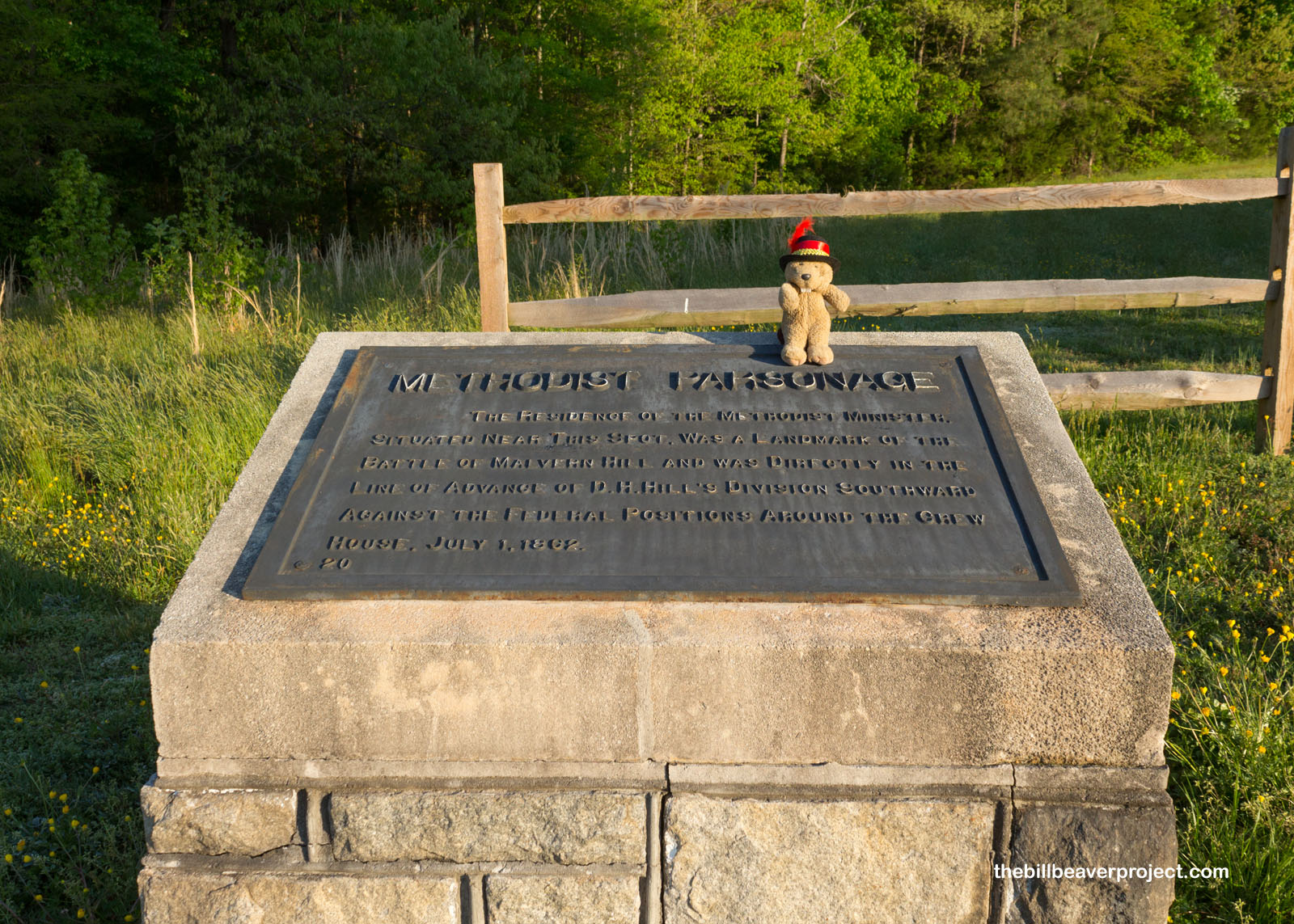 |
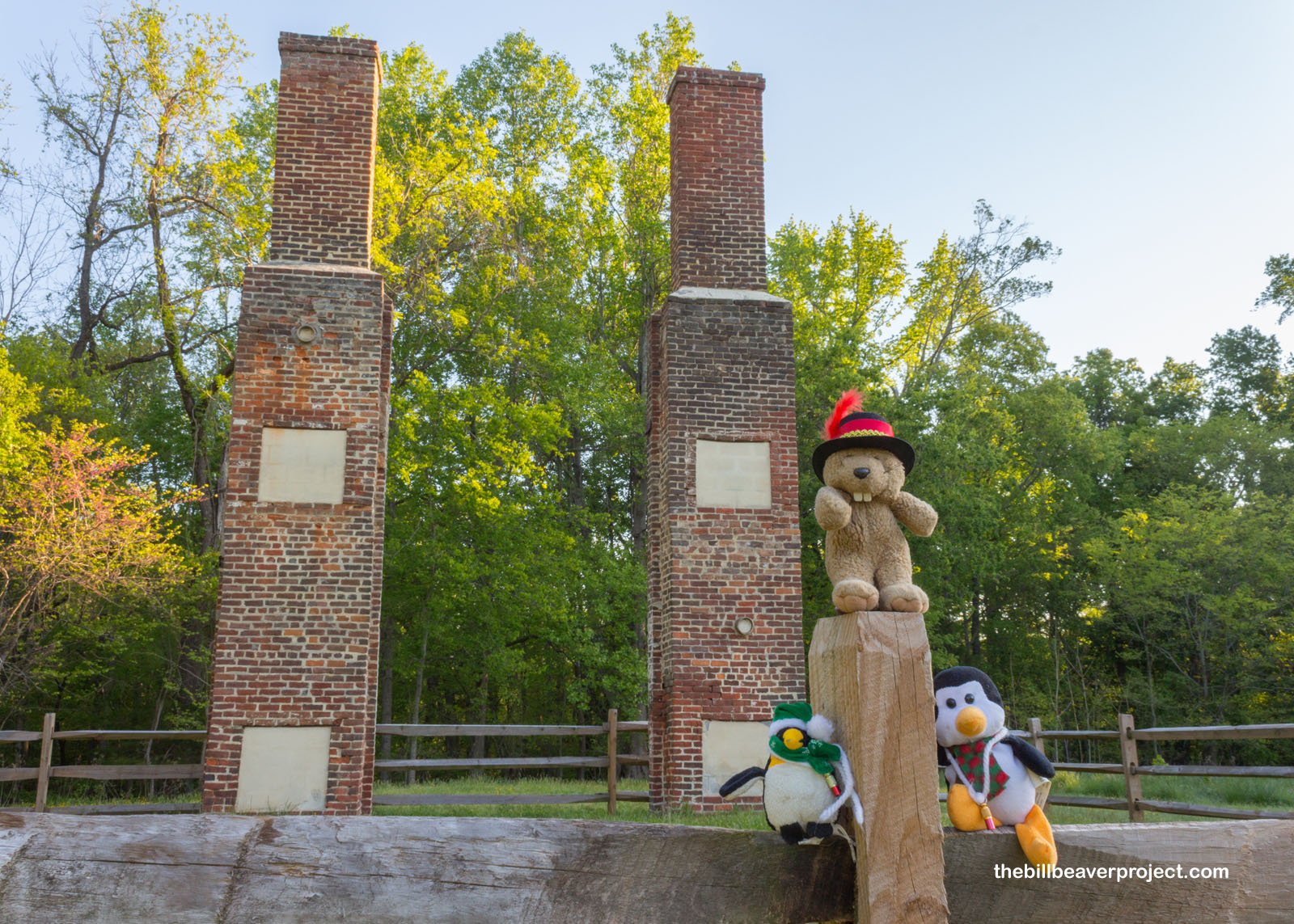 |
In fact, we traveled 255 years back in time to Jamestowne, the first permanent English settlement in the Americas! Official founded May 14, 1607, it was a venture by a joint-stock company fittingly called the Virginia Company. Set up by King James I (Get it? Jamestowne?), this company had a monopoly on colonization over what we now call Maryland, Virginia, and North Carolina. Their main objective: silver and gold! The penguins counted down the five minutes before the doors opened at 9:00!
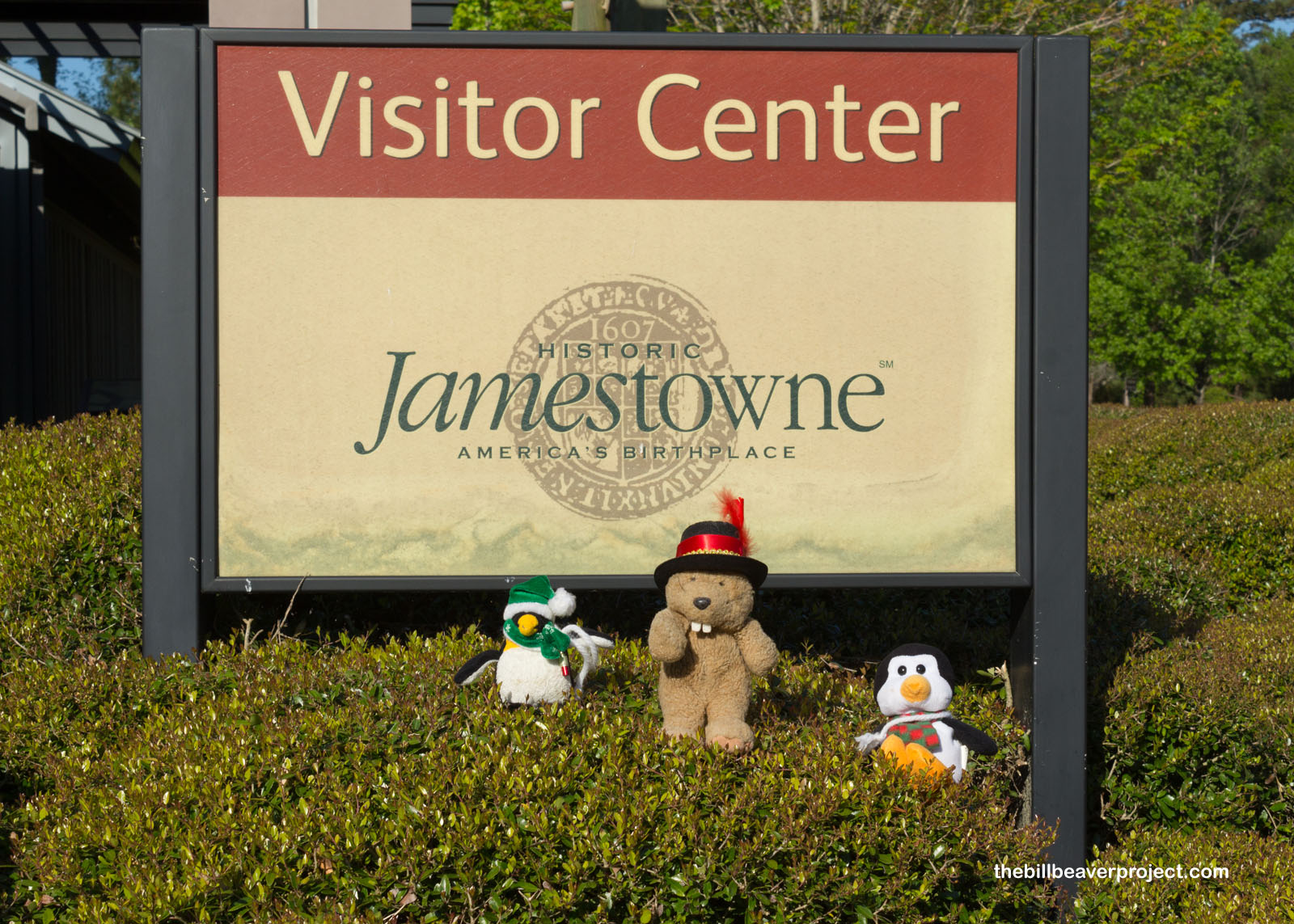 |
For a long time, the exact location of Jamestowne was lost to the ages, until the turn of the 20th Century when the Association for the Preservation of Virginia Antiquities (APVA) started buying up land in the area. Like at Washington’s Birthplace, the federal government had monuments installed to mark the site for its 300th birthday, before they’d even located the remains of the original James Fort! The huge Tercentennial Monument obelisk is 104 feet tall, one foot for every Jamestowne settler! The Memorial Church was built over the foundations of the 1619 church where the first representative assembly was held. Both of these monuments went up in 1907, but excavations didn’t begin in earnest until 1994! Led by William Kelso, these excavators were charged with digging up hard evidence of the original fort site before its 400th birthday, which they accomplished ten years ahead of schedule!
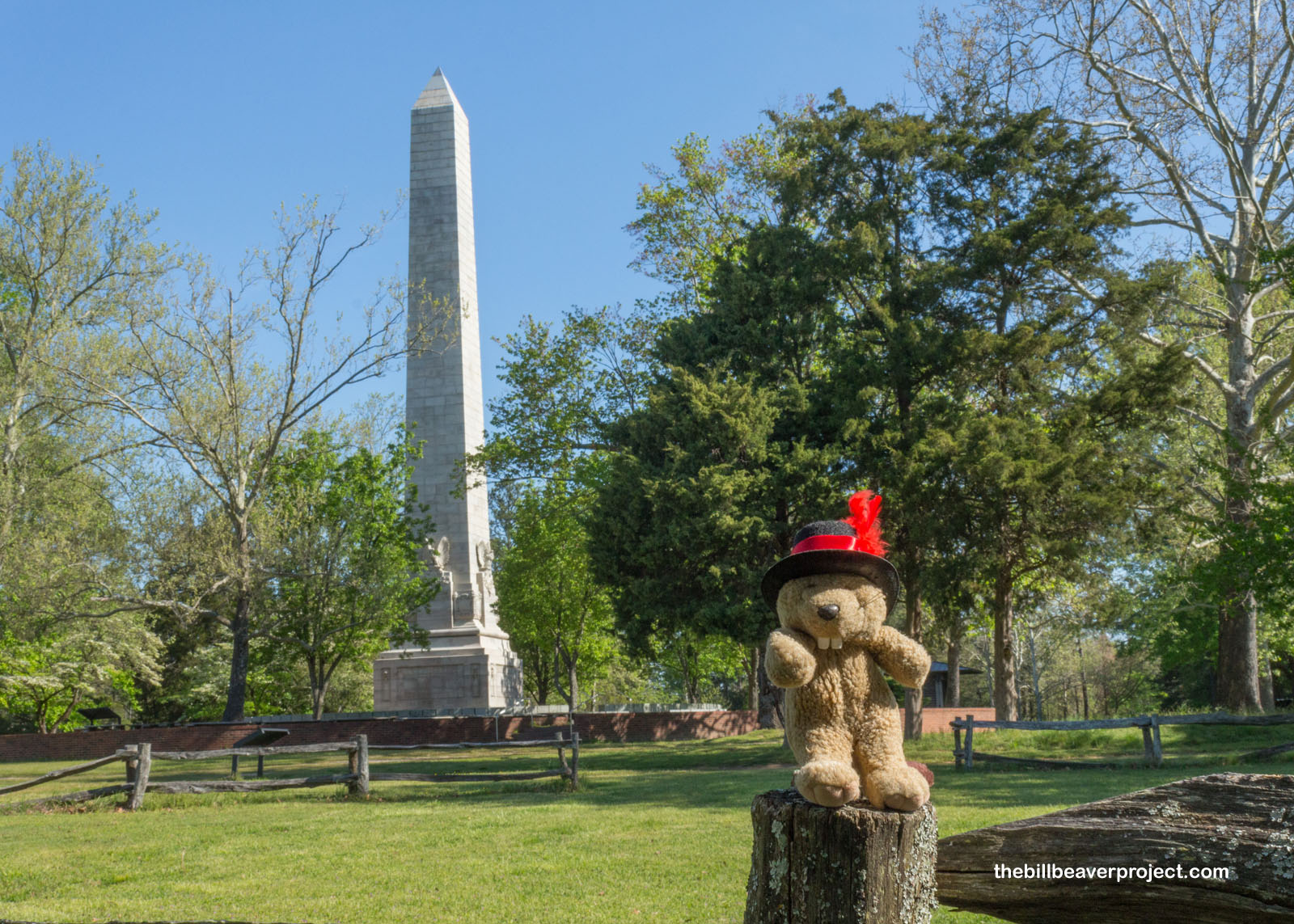 |
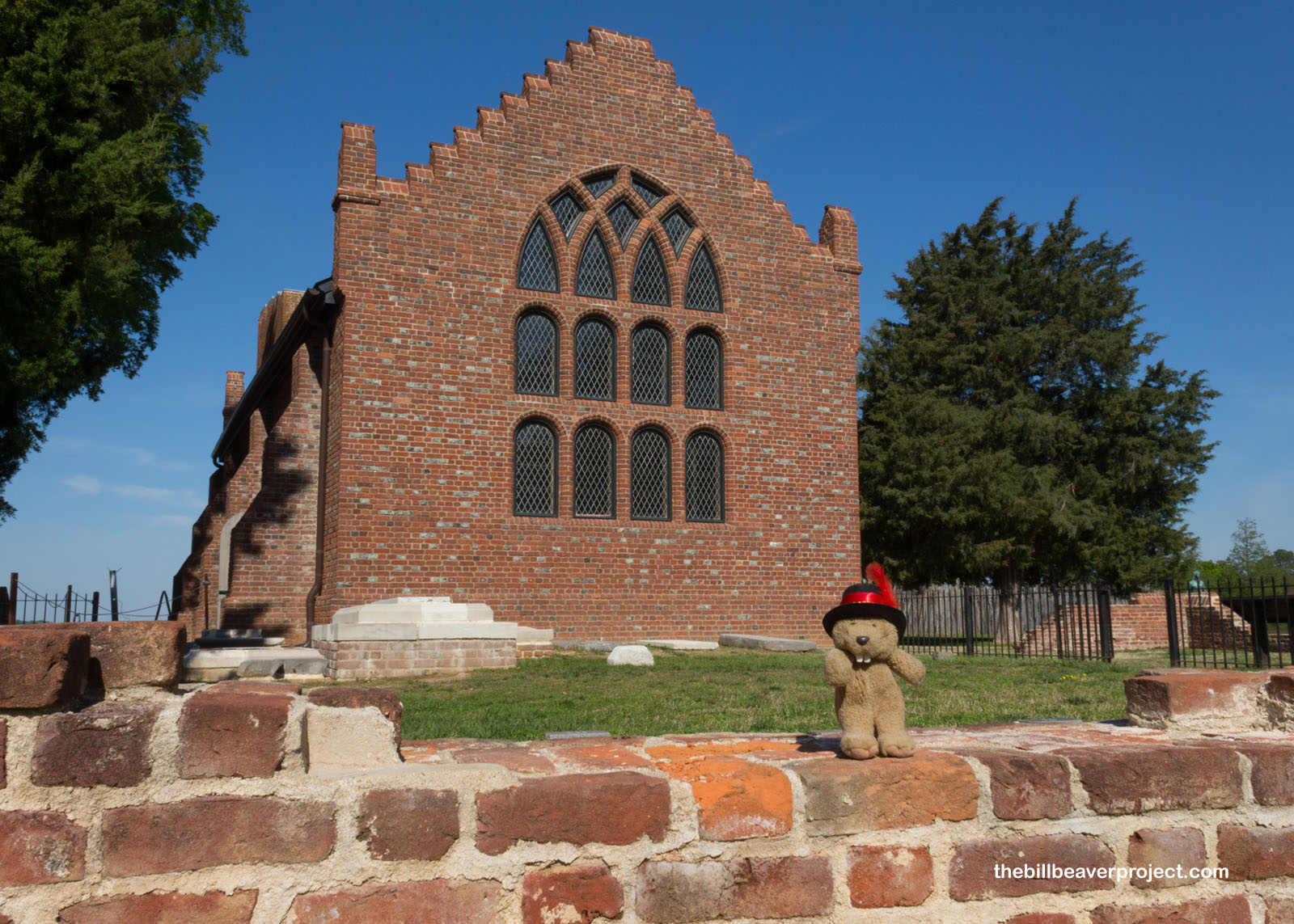 |
Today, Historic Jamestowne is divided into two sections: the original fort from 1609, run by Preservation Virginia, and the town that developed around it from 1660 until 1699, part of Colonial National Historical Park! Using surviving records from North America’s first legislative assembly, archaeologists were able to match the foundations they uncovered with the town’s plans and layout! Meanwhile, the penguins set out to examine the foundations for gold! I told them to look but not touch the super old, historic foundations!
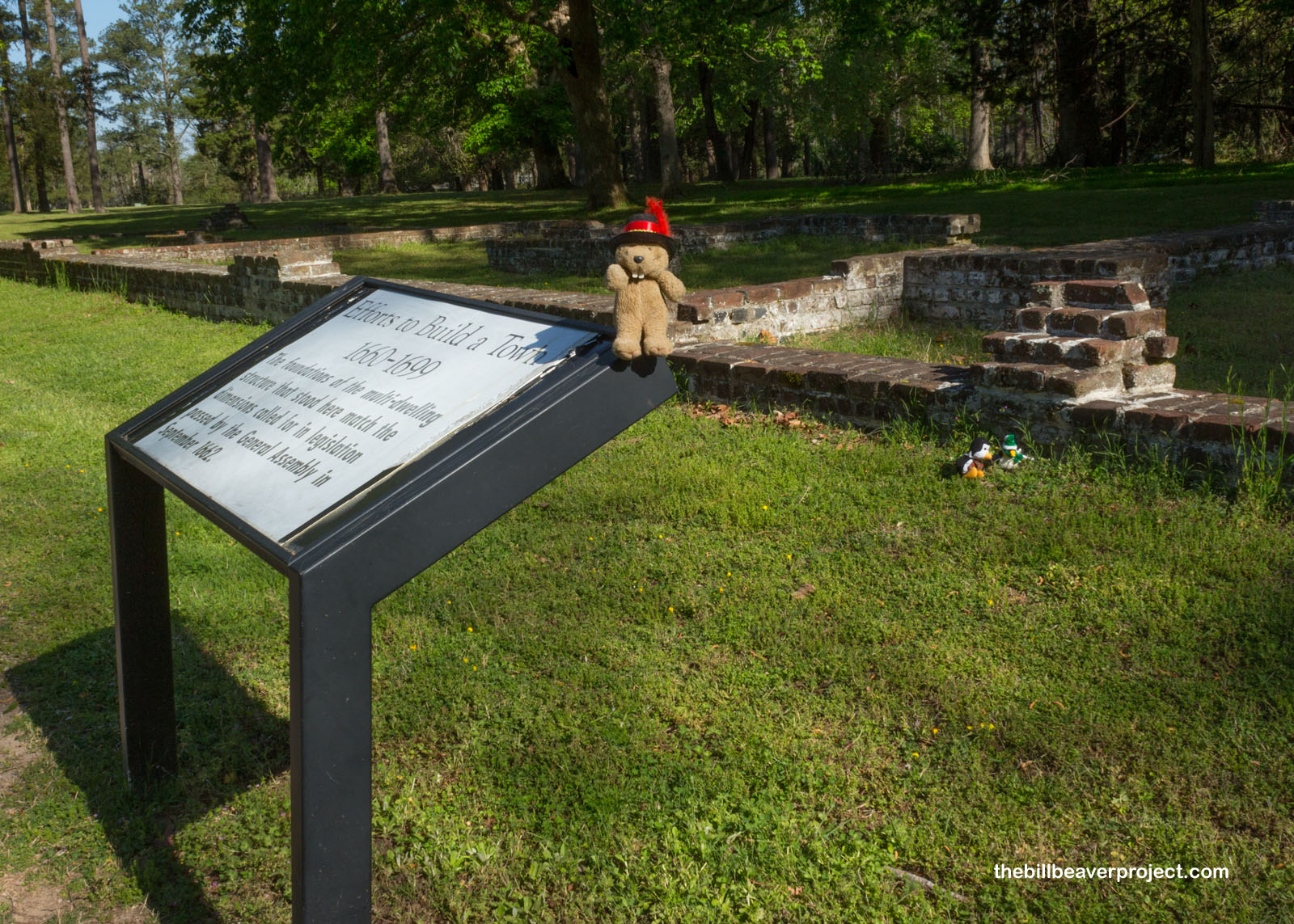 |
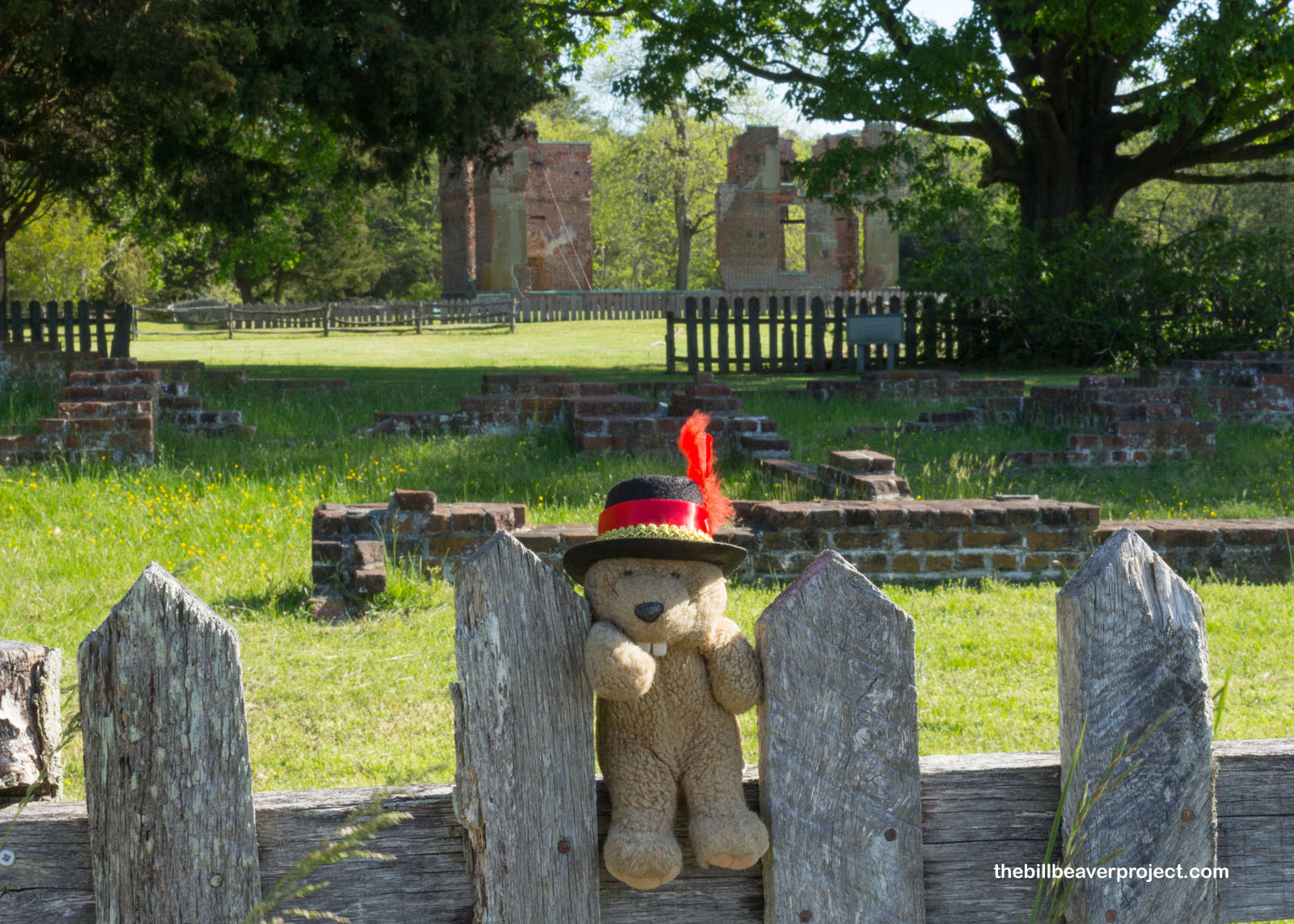 |
Artifacts helped too! Bottles in this foundation told excavators that it was a tavern owned by Colonel Thomas Swann, a.k.a. “ye great toade,” who advised Nathaniel Bacon in his famous 1676 rebellion against British governor, William Berkeley. For that reason, rebels burned the governor’s home (only a sign posted nearby) but spared the tavern!
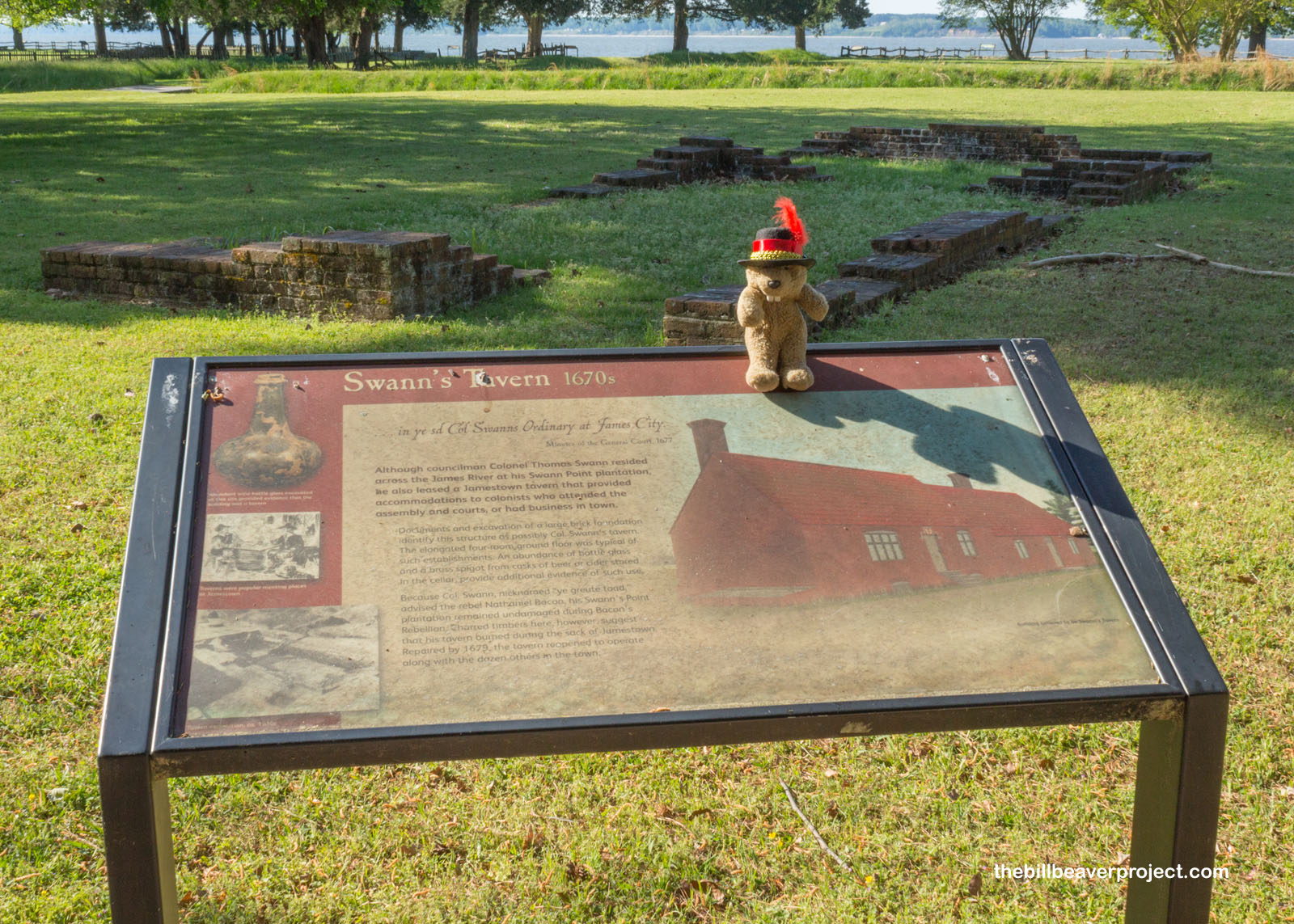 |
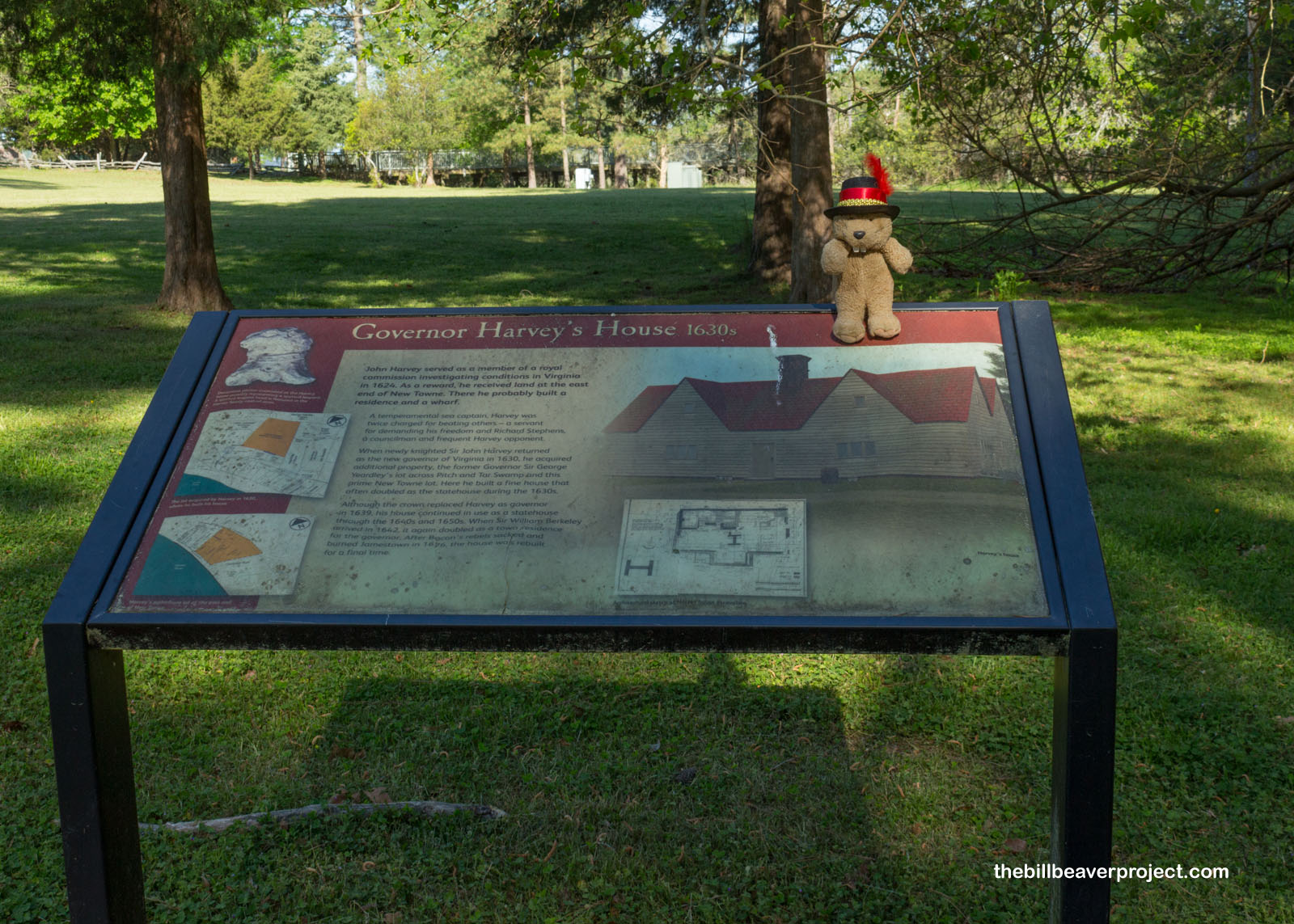 |
The flattening of most of these buildings happened in the 1750s as the colonial capital moved to Williamsburg and private landowners like Richard and Elizabeth Ambler turned the town into farmland. Mr. Ambler was a duty collector in Yorktown, which gave him the funds to start buying up land here! Their family mansion, reconstructed here in the 1930s, represents this final stage of Jamestowne before it was converted to a Confederate fort in 1861! Reconstruction or no, the penguins had to inspect for remains of the Ambler family fortune, though I was pretty sure it was long gone from here!
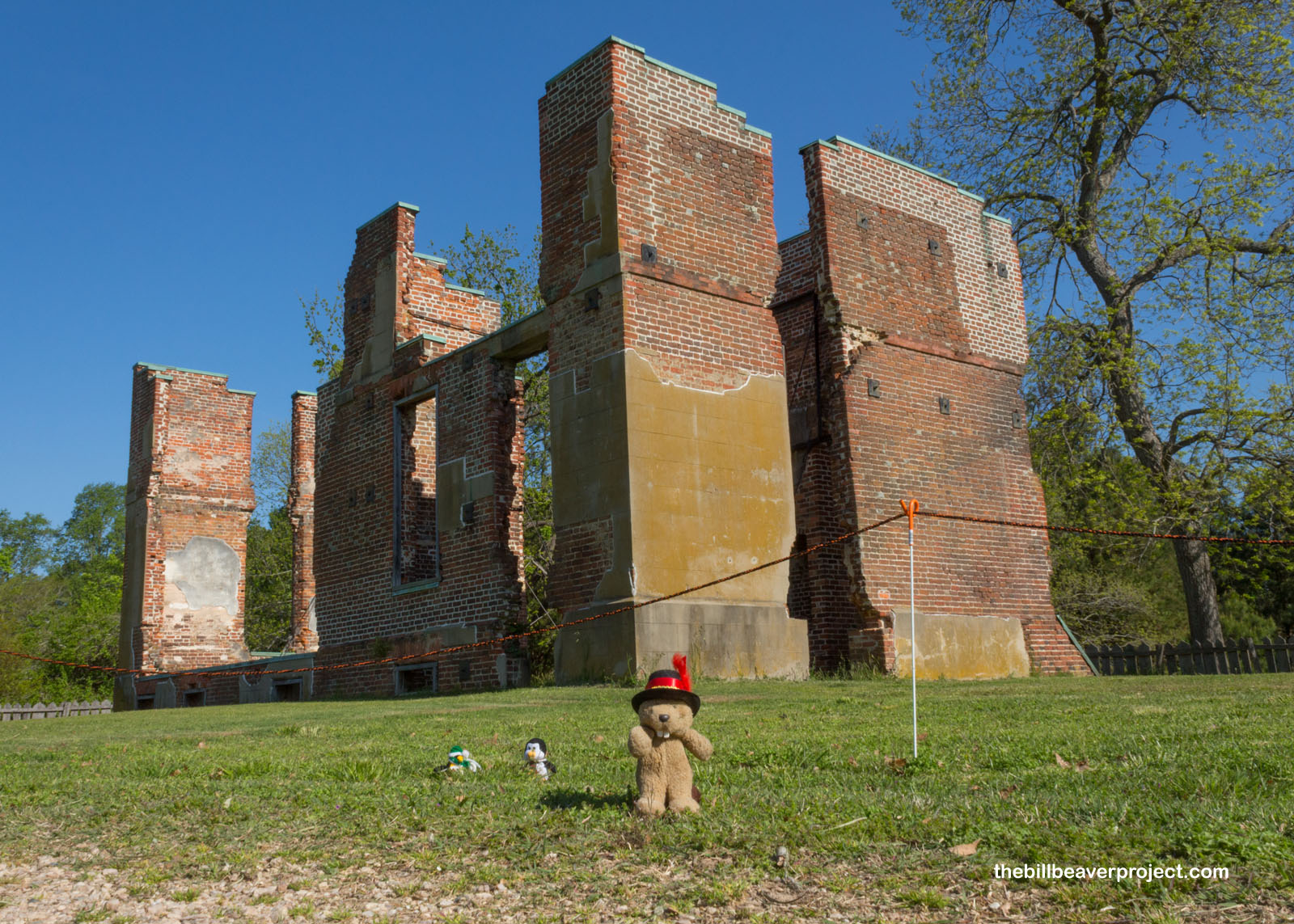 |
And what plantation story would be complete without the enslaved folks it was built on? The first African slaves to reach what is now the United States arrived aboard the British privateer ship White Lion in August of 1619, stolen off a Portuguese vessel in the Gulf and traded for supplies at Jamestowne Colony! We don’t know much about these first folks who were taken from Angola, except for a lady named Angela, who lived in the home of Captain William Pierce, whose foundation was behind this sign!
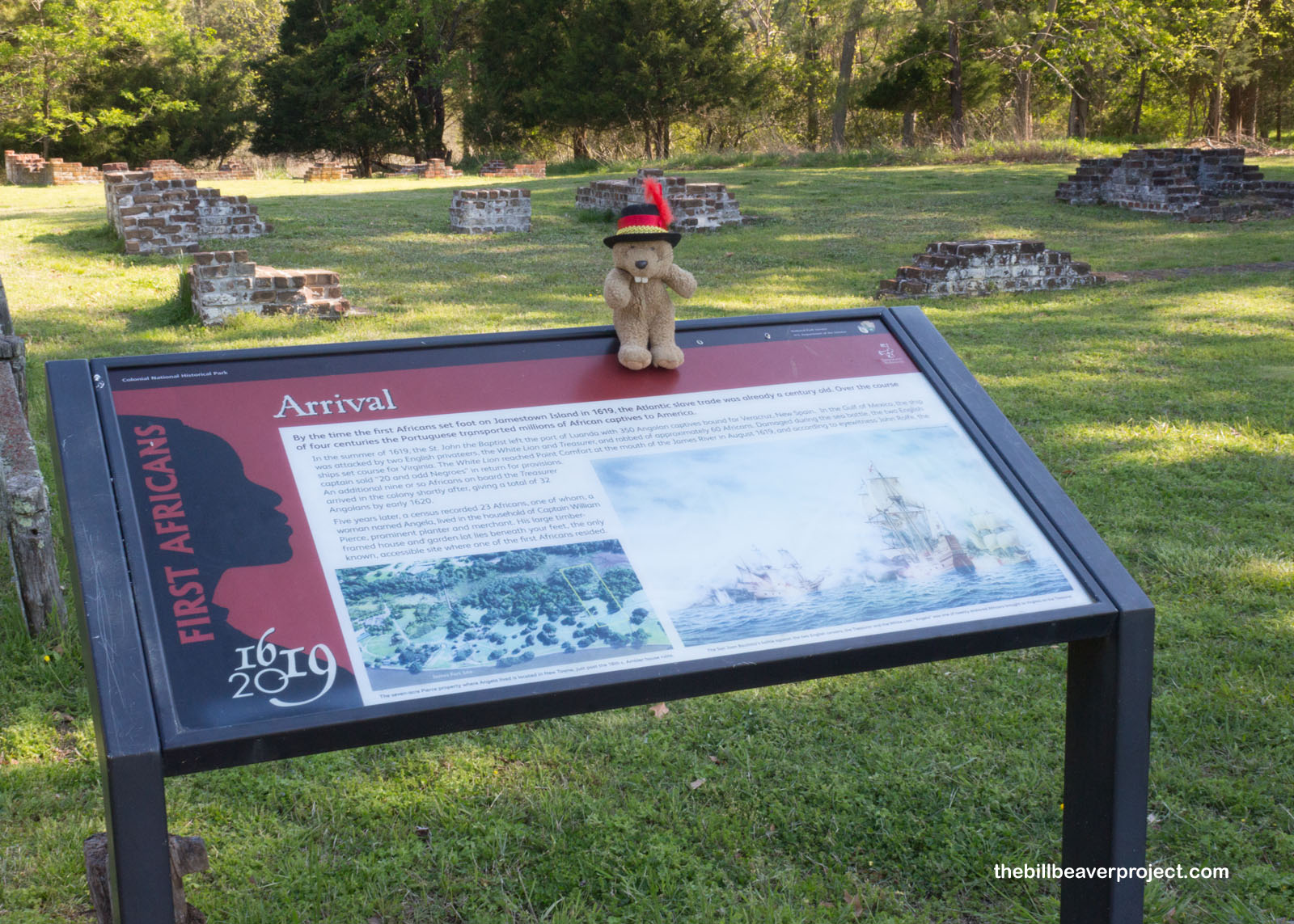 |
Hey, wait a second! Where’d those penguins go? They’d been right behind me! They must have gone toward the original fort site, because of the gold rumors. I headed that way, spotting some familiar faces in copper! Pocahontas was the favorite daughter of Chief Wahunsenacawh of the Powhatan Confederacy, who wanted the colonists to be their subjects. Because of her interest in these newcomers, she served as a peacemaker between the two groups until she left for England in 1614. On the English side was John Smith, who came here in 1607 as a prisoner charged with mutiny, built fast, explored hard, and returned to England in 1609 after his fellow colonists tried to blow him up! The two of them definitely knew each other and worked with each other. It’s still unclear if Pocahontas saved John Smith’s life, but however he portrayed her made her one of the most famous people in US History!
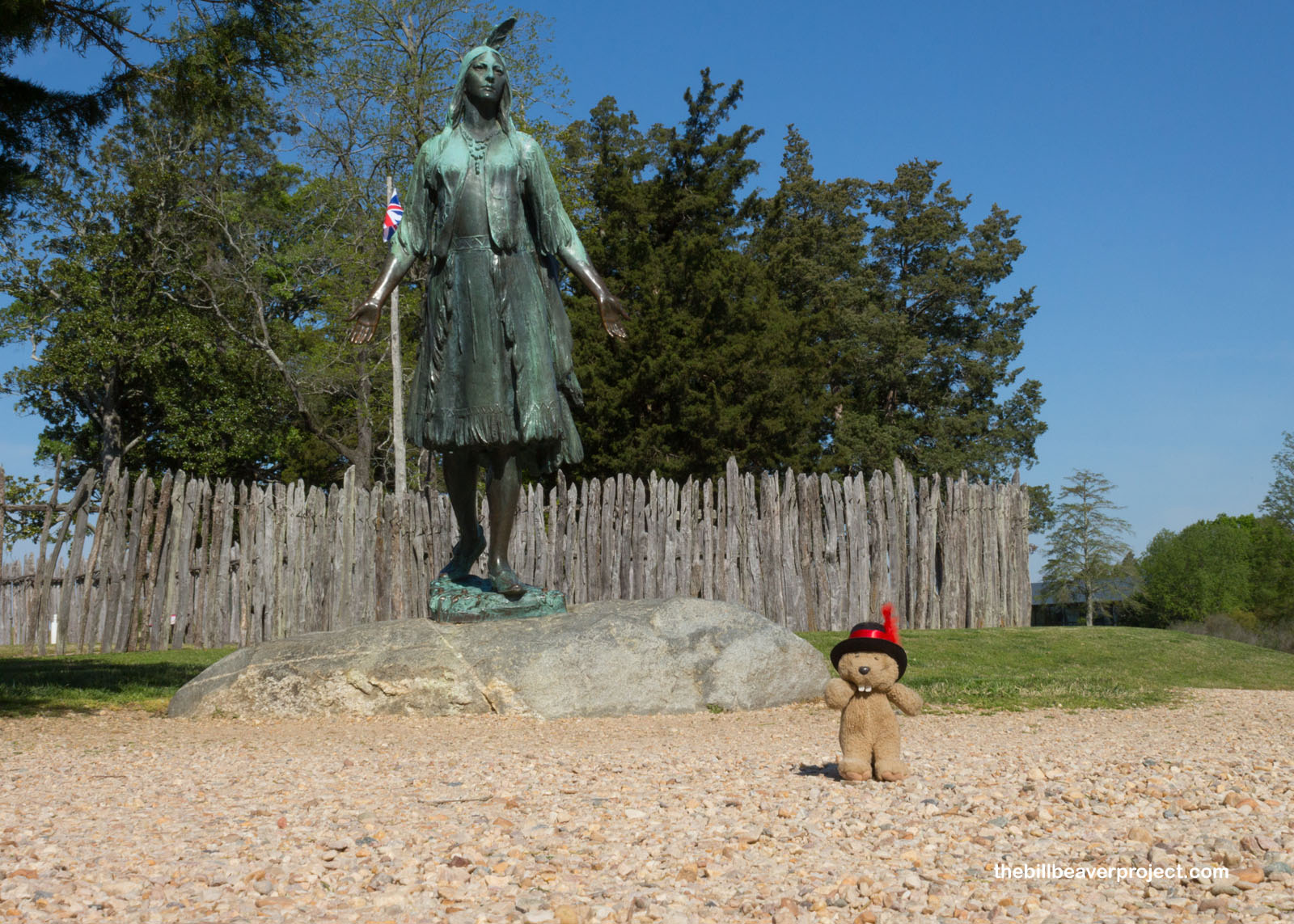 |
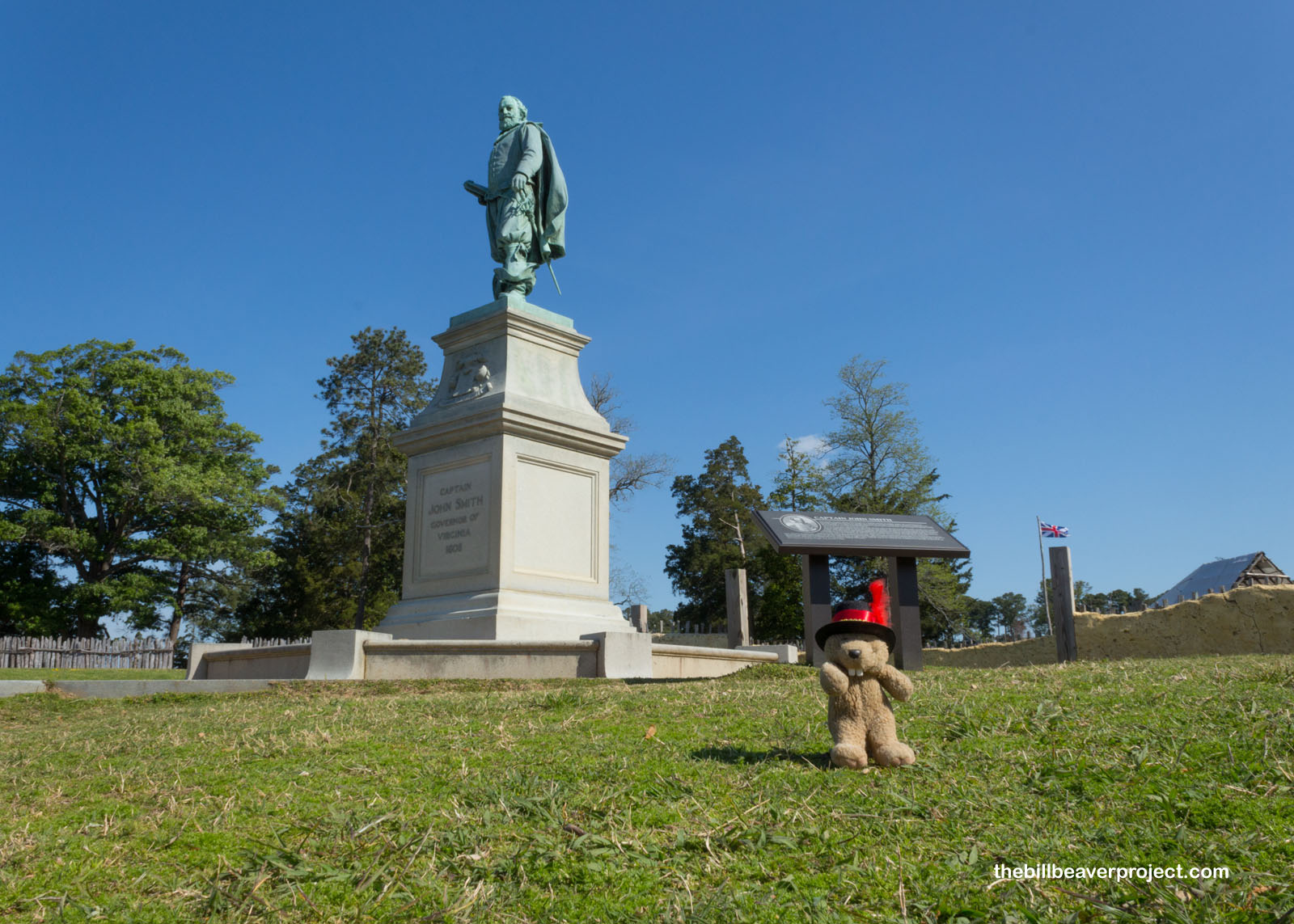 |
Phew! I caught up with the penguins inside the reconstruction of James Fort! 104 settlers lived inside a triangular wall with cannons meant to defend against attacks by the Spanish! This first fort was doomed, because after John Smith left, a hurricane wrecked some of the Virginia Company’s supply ships, and a tough winter killed all but 60 colonists. The original fort was abandoned on June 7, 1610, but not for long. The new governor, Lord De la Warr, stopped them as they were leaving and forced them back to try again!
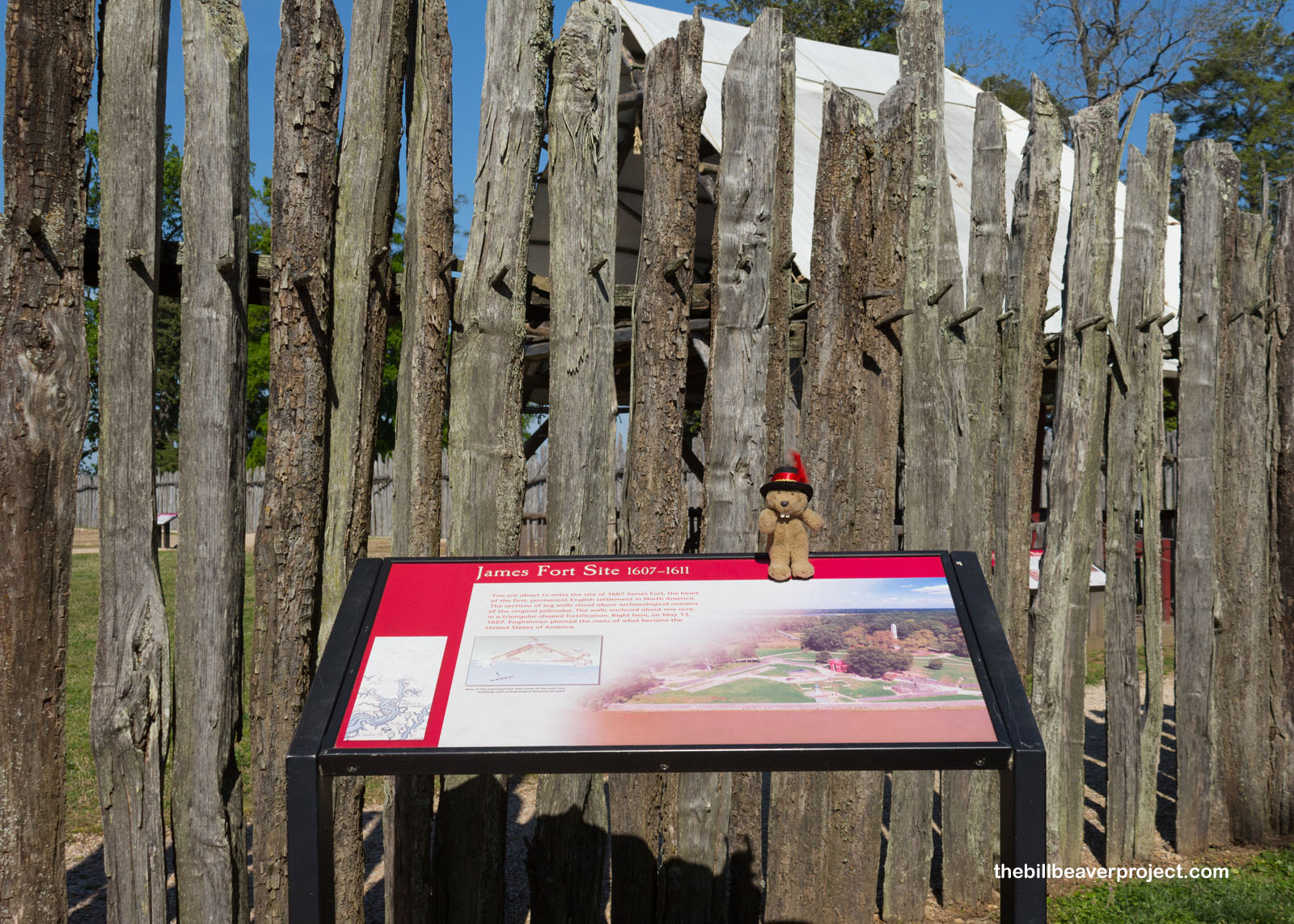 |
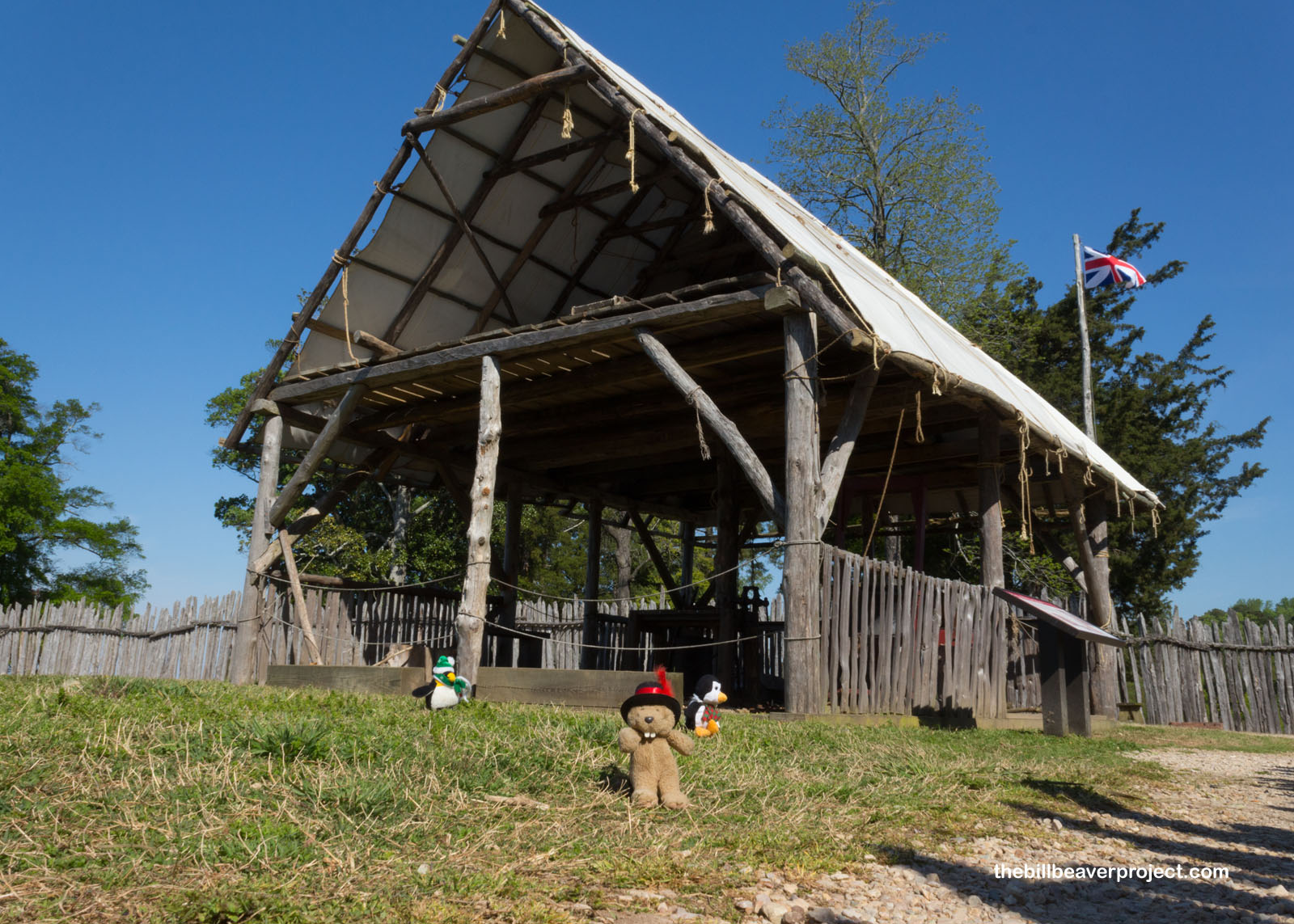 |
As I read up on the history, I heard an excited shout of “X marks the spot!” I ran toward the noise and found the penguins staring sideways at a tombstone that might have looked like an X from their angle! Before I could stop them, they started digging, right in front of a ranger, who arrested both penguins and took my friends away! I had to rescue them!
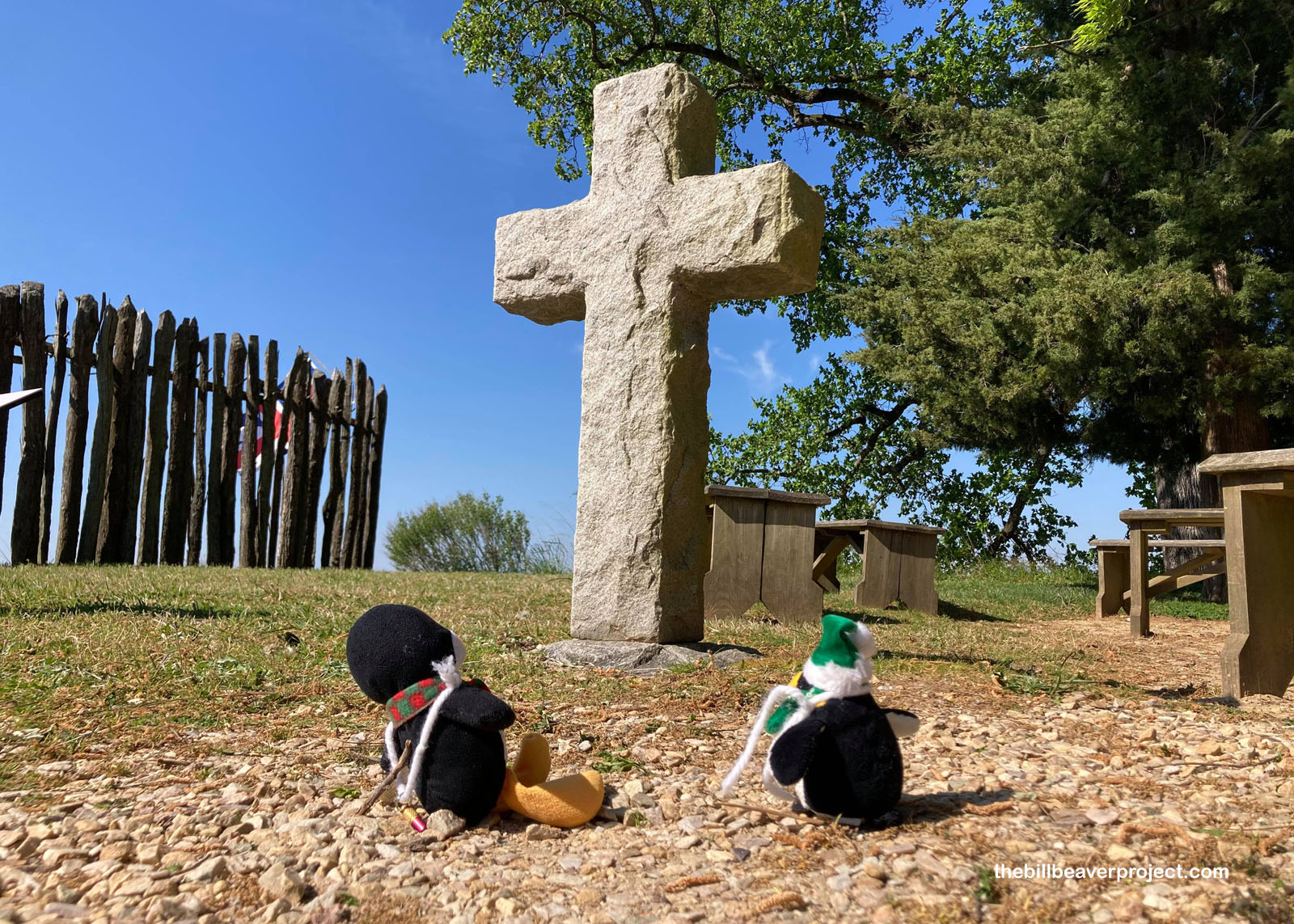 |
The closest jail I could think of was at nearby Colonial Williamsburg, the capital of Virginia Colony after it moved here from Jamestowne in 1699! I tailed the wheels of justice there, but lost sight of them in the parking lot, where I had to catch a shuttle. While waiting, I couldn’t help but notice that the visitor center had been converted into a COVID-19 vaccine clinic! Speaking of which, today, the State of Virginia launched their Variants of Concern dashboard to keep tabs on forms of the virus like the super contagious Delta variant, which just got here last month! Still, the whole state of Virginia reported 1,340 new cases of COVID-19 today, compared to the 424 back home in Los Angeles County! Good thing most of Williamsburg is outdoors!
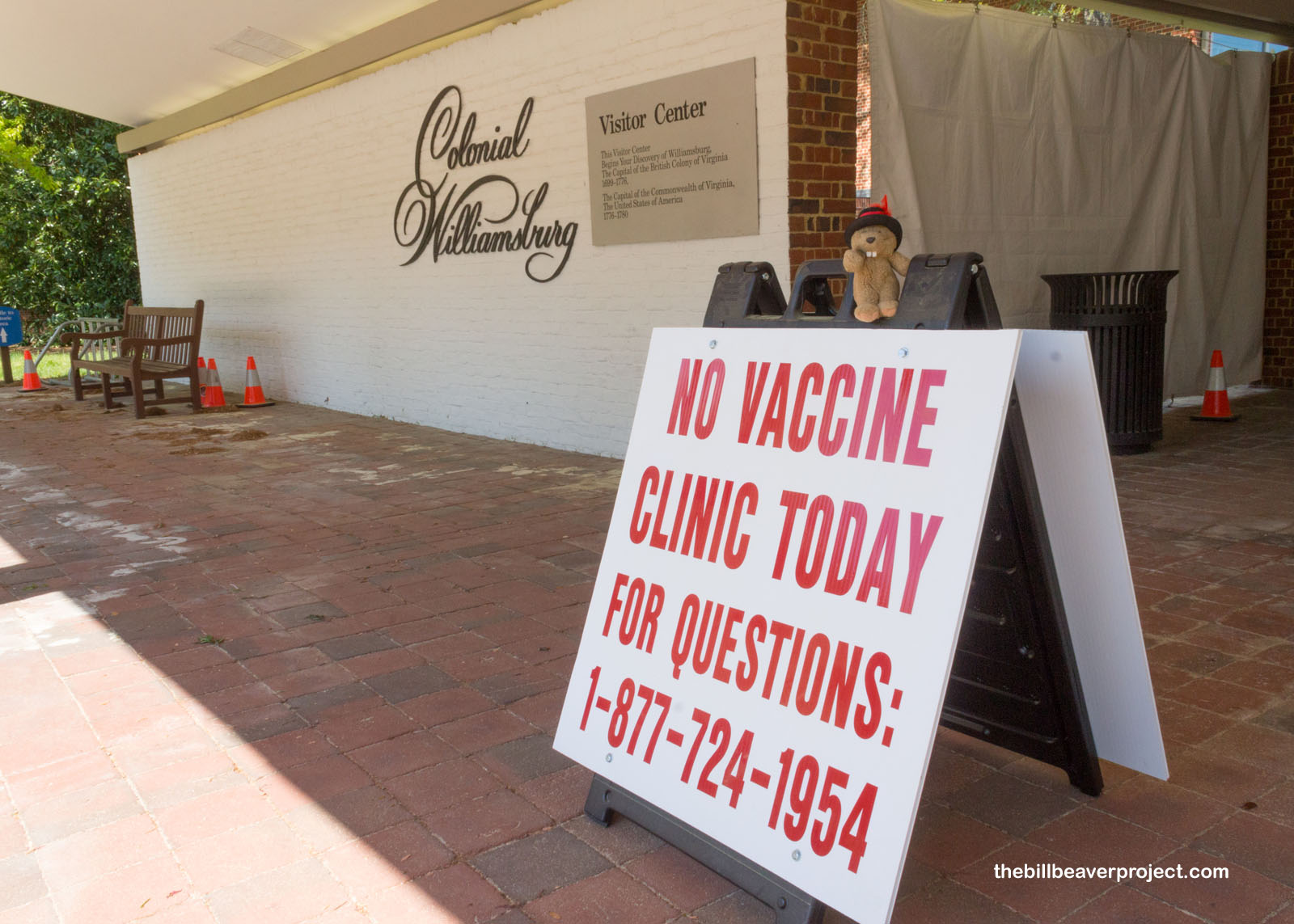 |
Williamsburg was capital of Virginia from 1699 until 1780, originally called Middle Plantation and renamed for King William III of England! It was extensively restored between 1926 and 1934 under John D. Rockefeller, Jr. and today is a mix of original buildings and reconstructions to create a living colonial town! I began my search for the penguins at the Governor’s Palace, which had to be completely rebuilt from its foundations, because the British destroyed it in 1781 during the Revolutionary War! I hoped the same fate hadn’t befallen Penguin, Jr. and Penguin III!
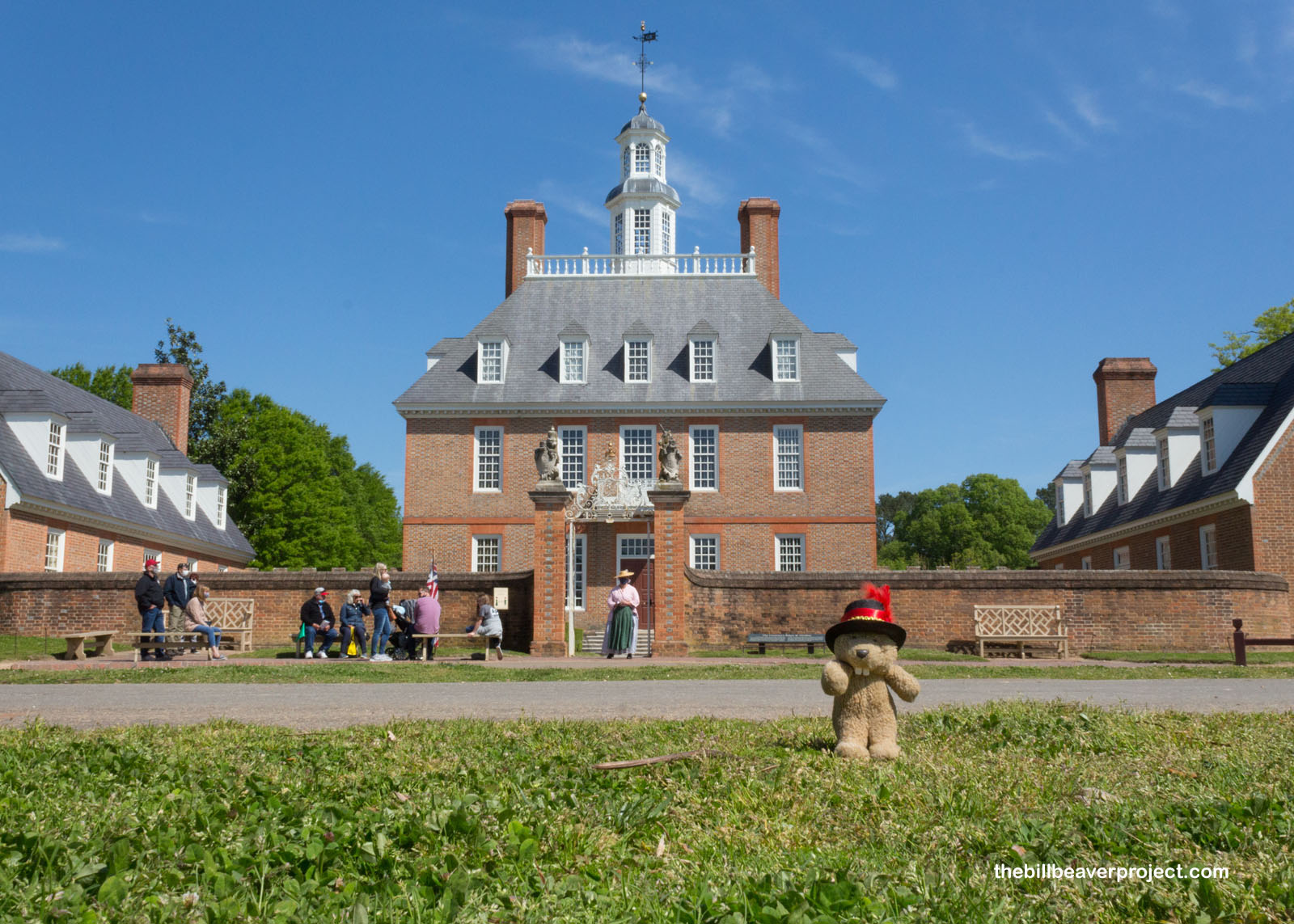 |
I had a lot of ground to cover in Williamsburg and lots to sort out! There was the original 1755 home of George Wythe, still one of the best examples of Georgian architecture in the US! Then there were reconstructions like Josiah Chowning’s Tavern, which wasn’t originally here but still serves food under his name! Along the way, there were folks in period attire, acting out scenes from this calendar date in the 18th Century!
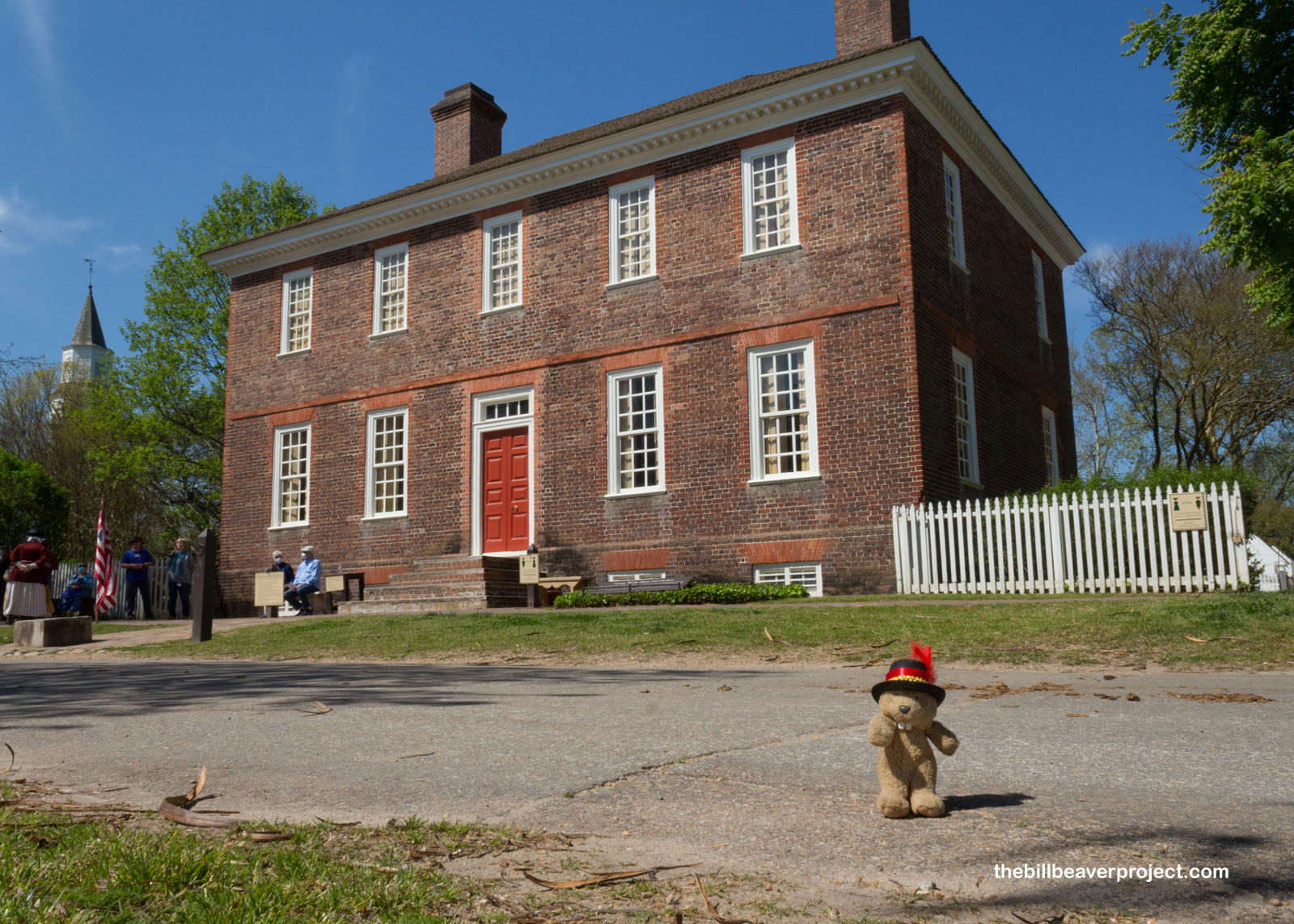 |
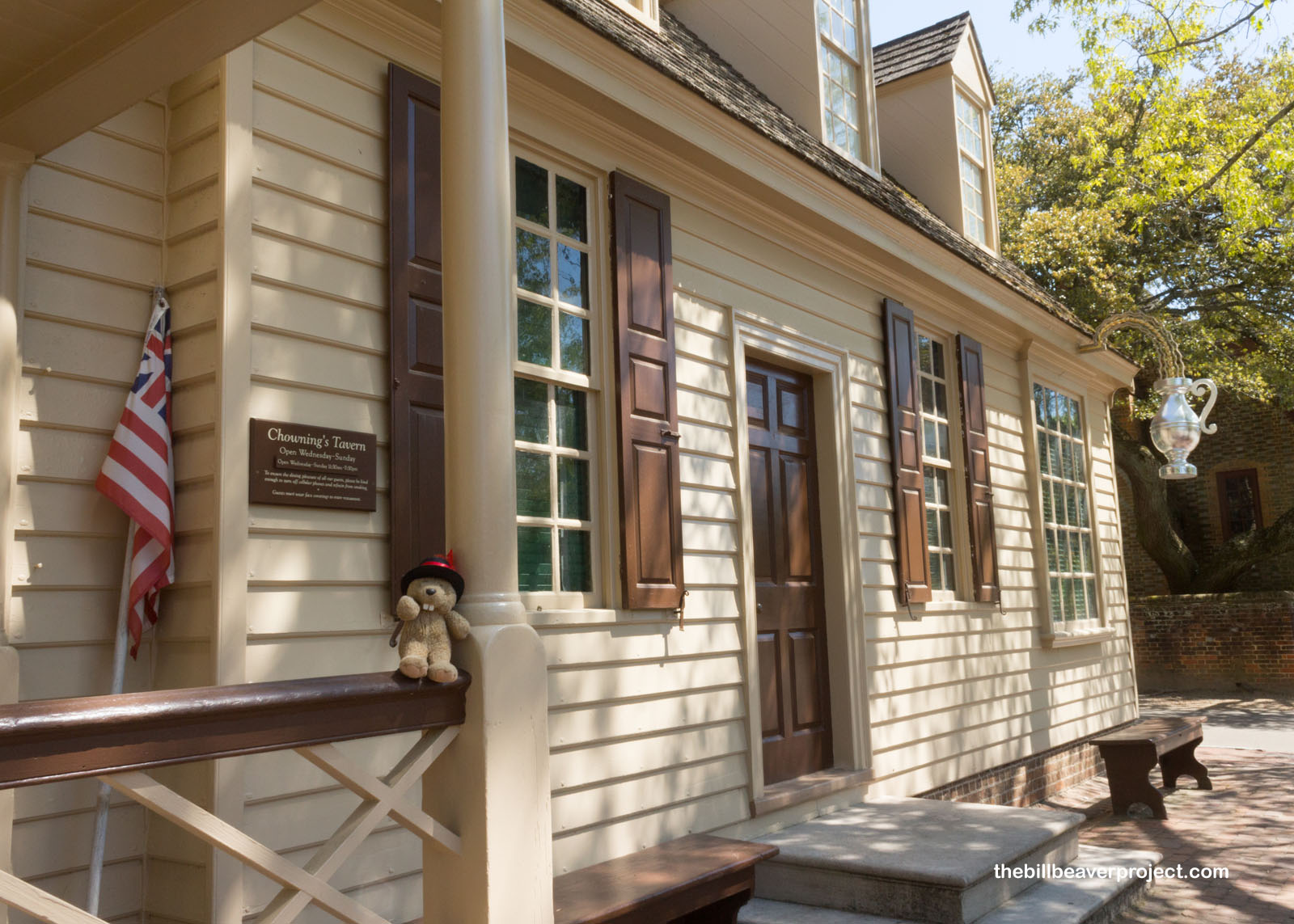 |
I hit a dead end at the old capitol building, the third here at Williamsburg. See, the first one, built in 1705, burned in 1747, and the second, built in 1753, burned in 1832! The third is a not-exactly-accurate Colonial Revival building that arose during the Rockefeller restoration! Somewhere here, though, Patrick Henry railed against the Stamp Act in 1765, and Virginia declared its independence from Great Britain ahead of the rest of the colonies on June 29, 1776!
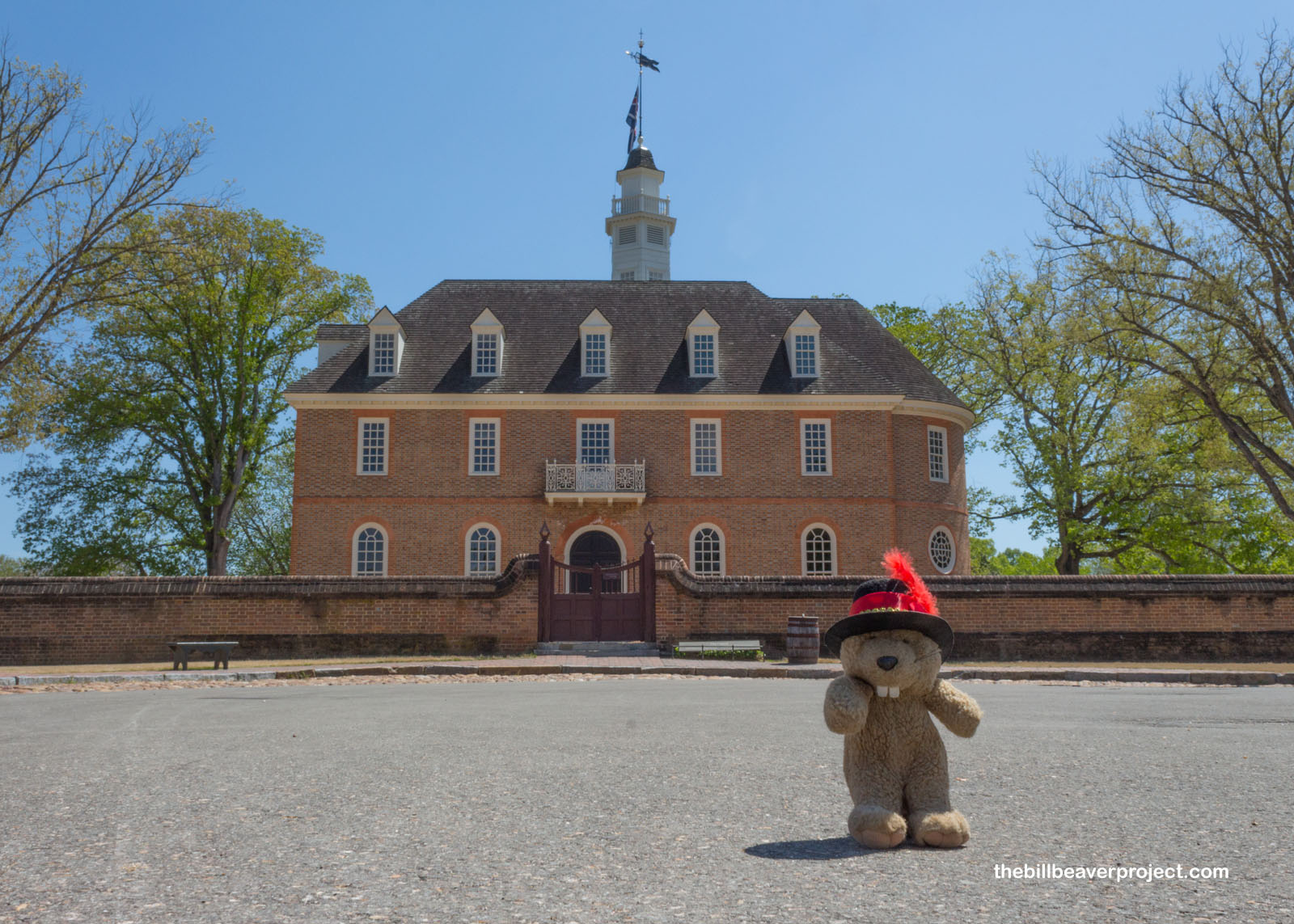 |
But where those penguins ended up?! I backtracked to the old Magazine, still intact since 1715! It was designed by Alexander Spotswood to keep all arms and gunpowder in a secure, central place, so folks wouldn’t blow up their homes with barrels of gunpowder and youngsters wouldn’t shoot their siblings! It was also the site of the Gunpowder Affair of 1775 when Governor Lord Dunmore seized the gunpowder from the Magazine, and Williamsburg residents forced him to return it!
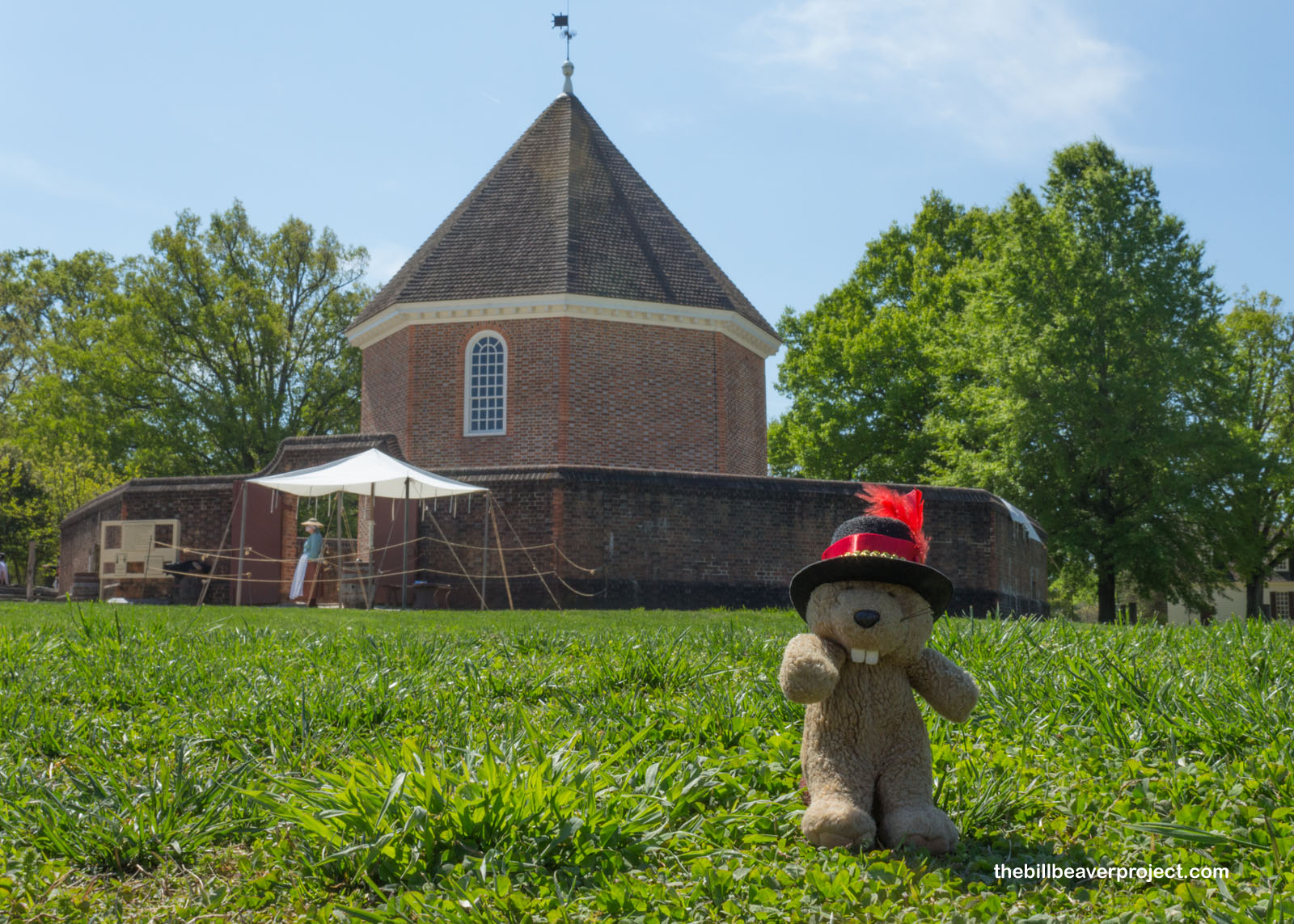 |
Then, out of that commotion from the past, I heard a commotion in the present! Across the street, next to the original 1770 courthouse, where colonists debated independence, a crowd had gathered, and I wondered if, maybe, just maybe, it had something to do with the penguins!
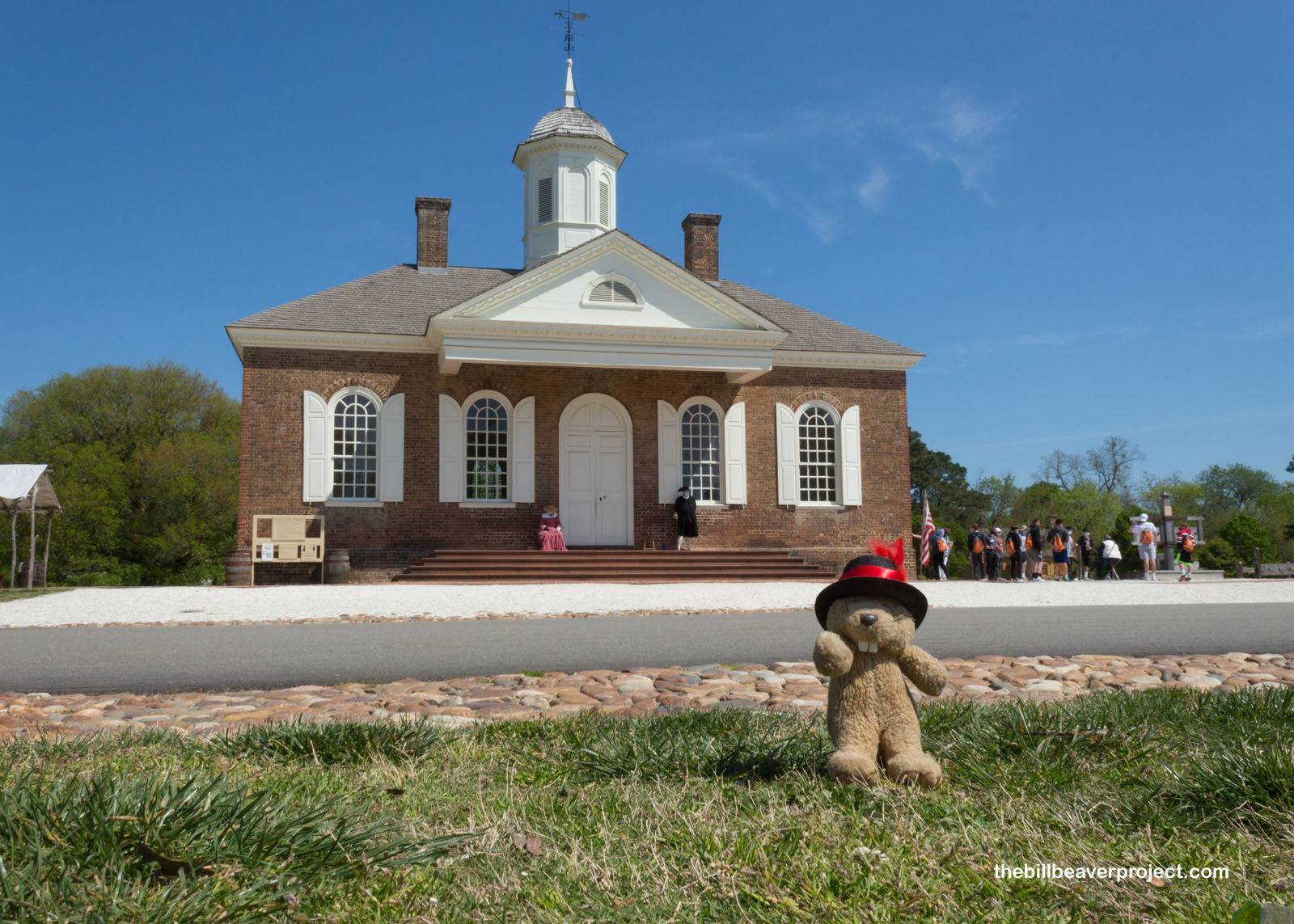 |
Sure enough! I found them at the stockade! Too small to be restrained, they’d been told they were in timeout and had to sit there thinking about what they’d done. I don’t know if they learned their lesson; they were just disappointed that they hadn’t found any gold, just like the original settlers of Jamestowne! They would have to reconsider how they funded their crusade against Shackleton!
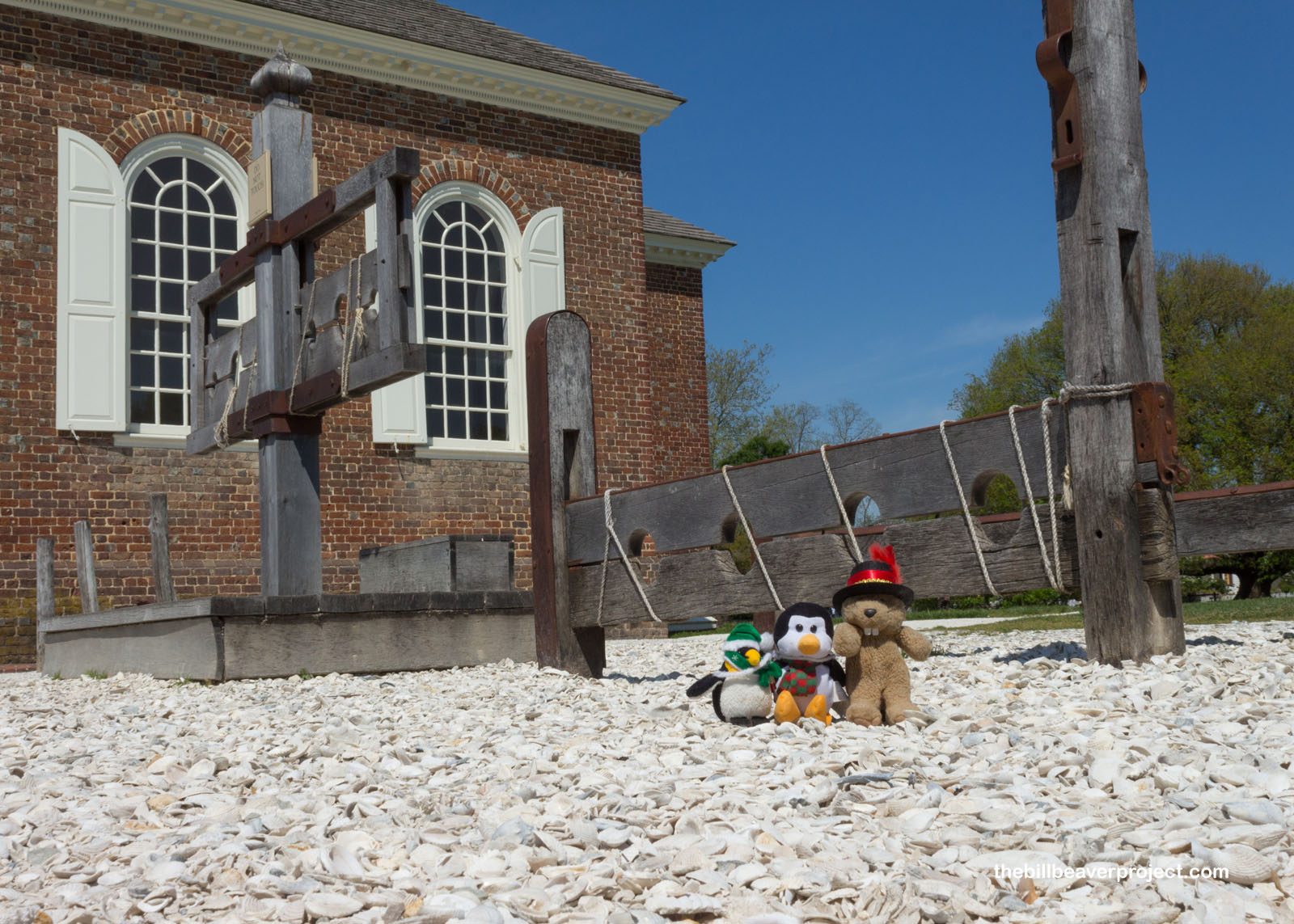 |
They wanted to go home after their ordeal, so we found a nearby coffee pot, which they tinkered with until it hummed and pulsed with light. Until next time, they said and vanished in a puff of caffeine! ‘Til next time indeed!
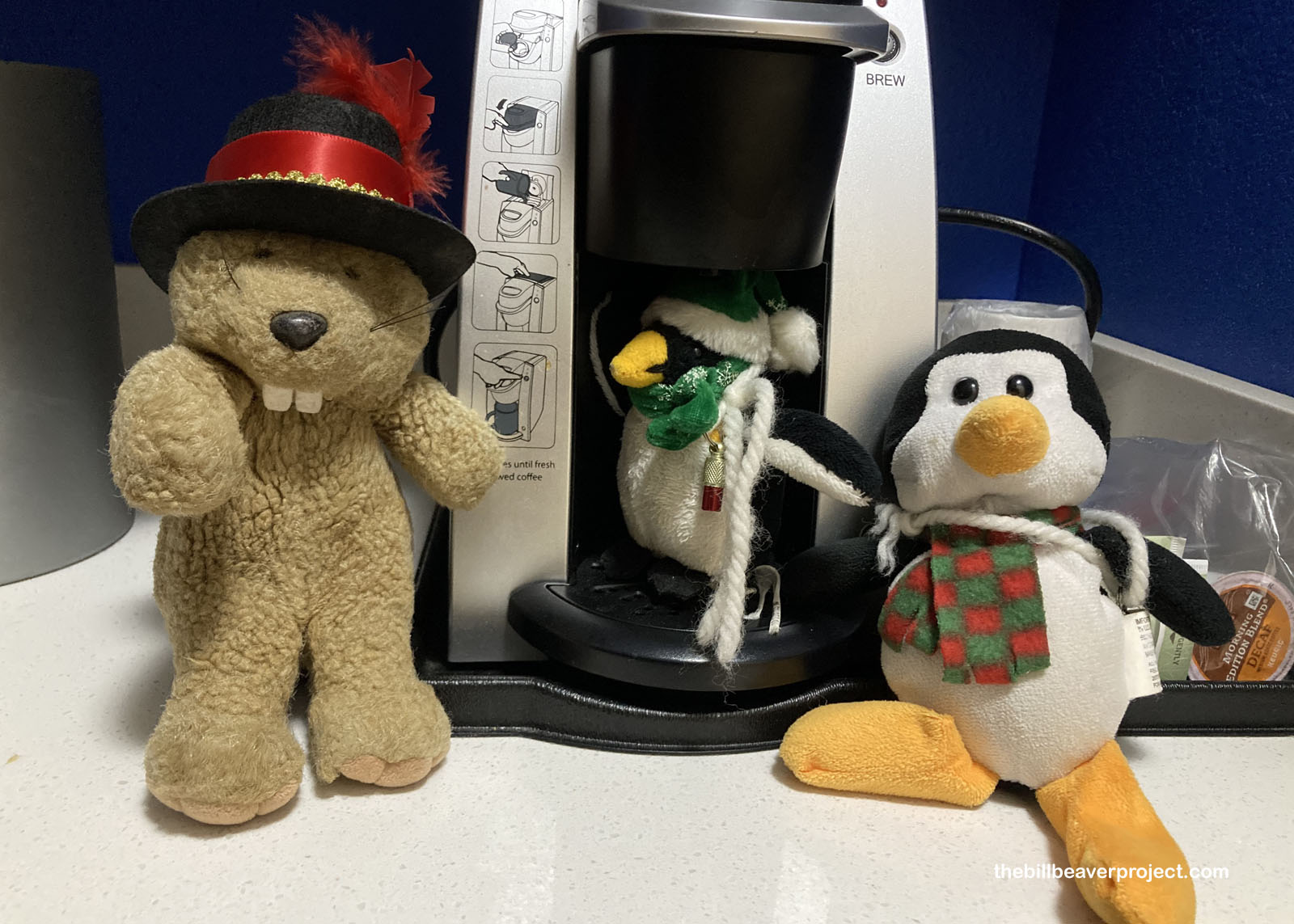 |
That left me to continue my journey south along the Virginia coastline. Where Jamestowne marked the beginning of British colonialism in America, Yorktown marked the end of it! A huge Victory Monument commemorates the final defeat of Lord Cornwallis and the end of the American Revolution! It was originally proposed ten days after the Battle of Yorktown but construction didn’t even begin for another hundred years! Designed by Mr. R.M. Hunt, J.Q.A. Ward, and Henry Van Brunt, this Hallowell Maine granite pillar was officially completed on August 12, 1884!
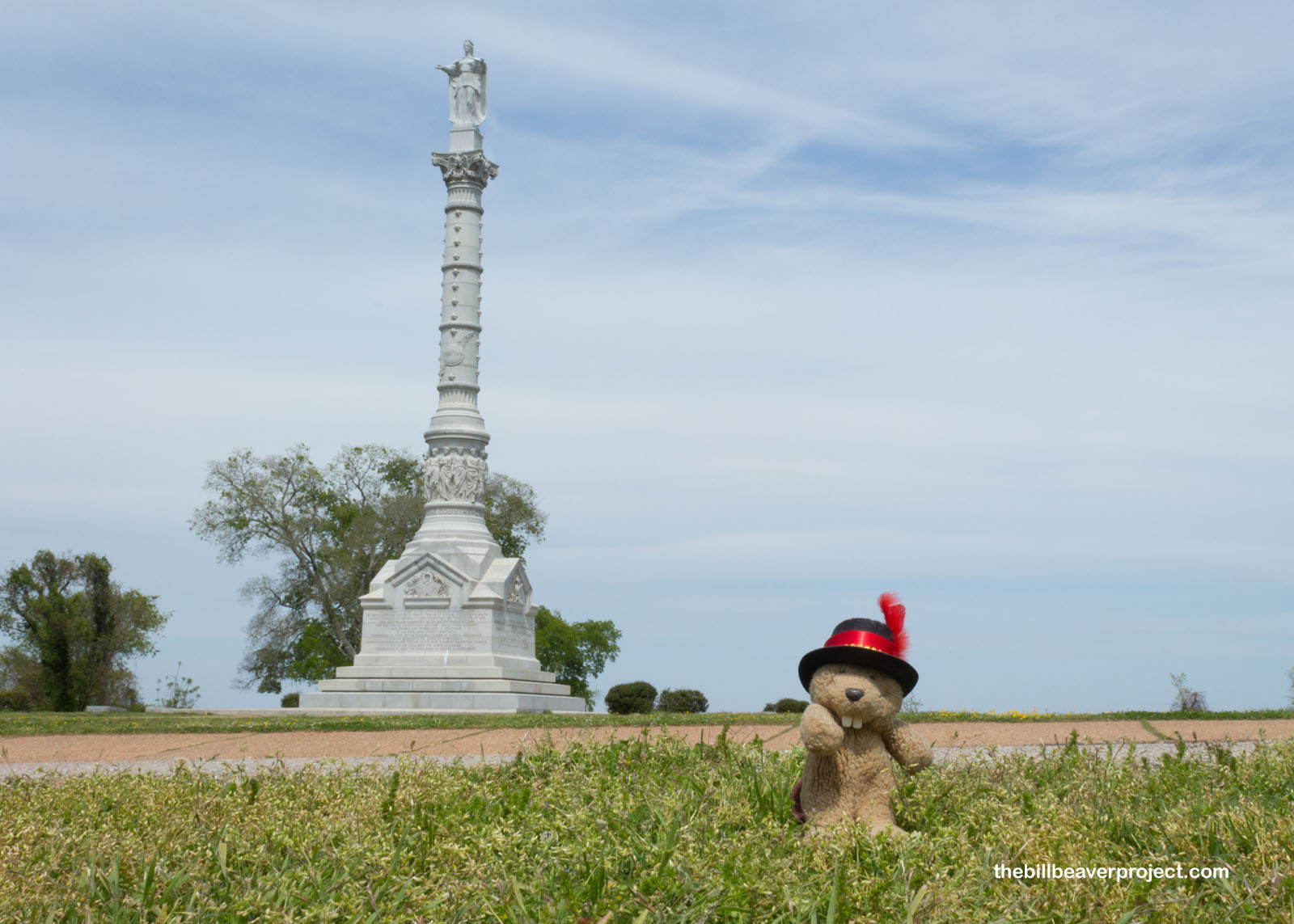 |
So how did Yorktown end up being so important? Well, it just so happened to be where General Lord Cornwallis decided to set up his winter quarters in October of 1781 and, he just didn’t fortify it all that effectively! The upstart Americans now had French artillery and navy helping them out, thanks to their victory at Saratoga, and to illustrate, there were still period-authentic field guns and howitzers in position at the Grand French Battery!
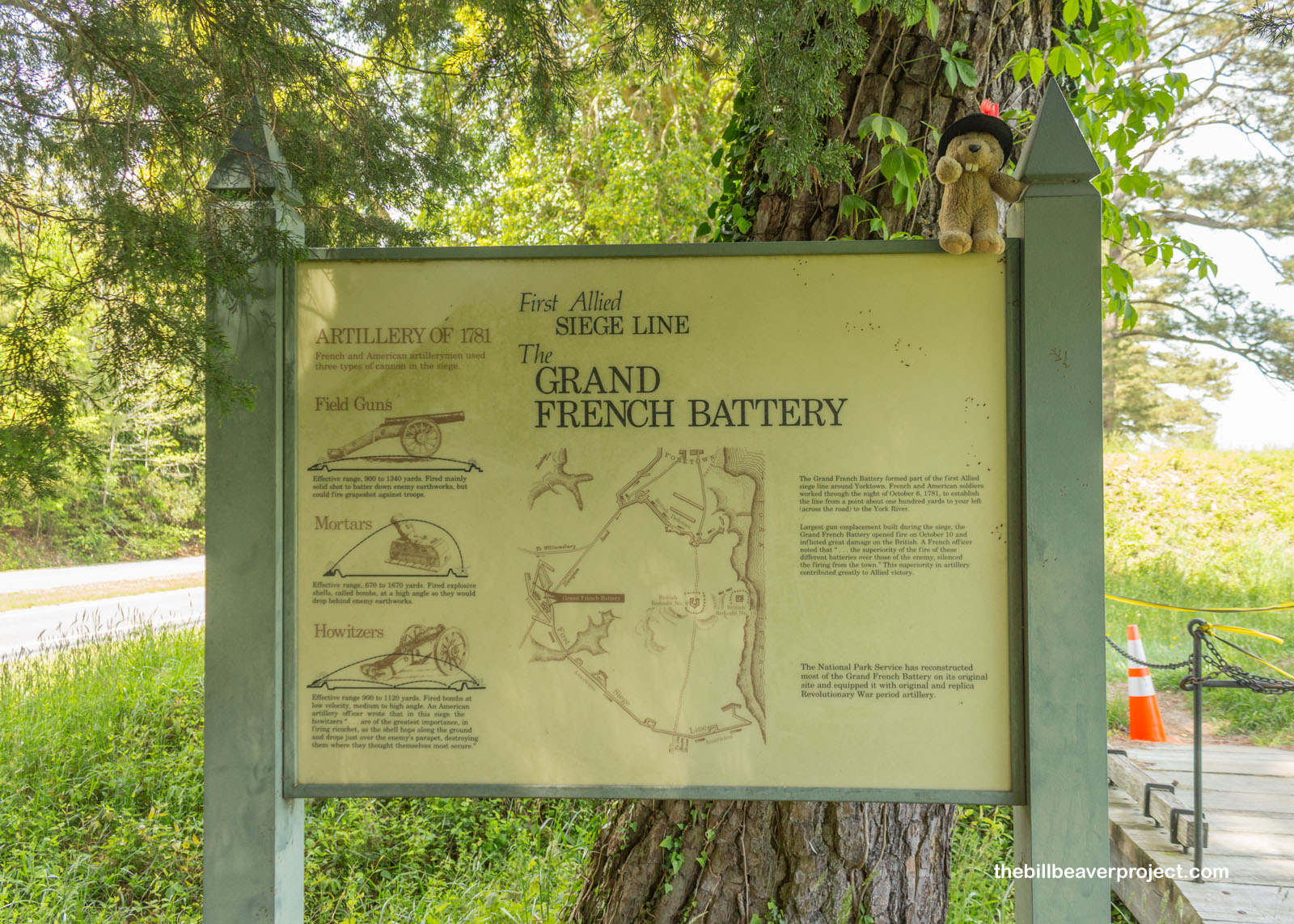 |
 |
On top of all this mighty artillery, French ships under Admiral de Grasse blockaded Chesapeake Bay, keeping the legendary British navy from sending reinforcements! Lots of them had already returned to New York after being badly damaged in a storm too! Penned in on all sides, Lord Cornwallis yielded to General Washington on October 19th, 1781 in the last major land battle of the Revolution!
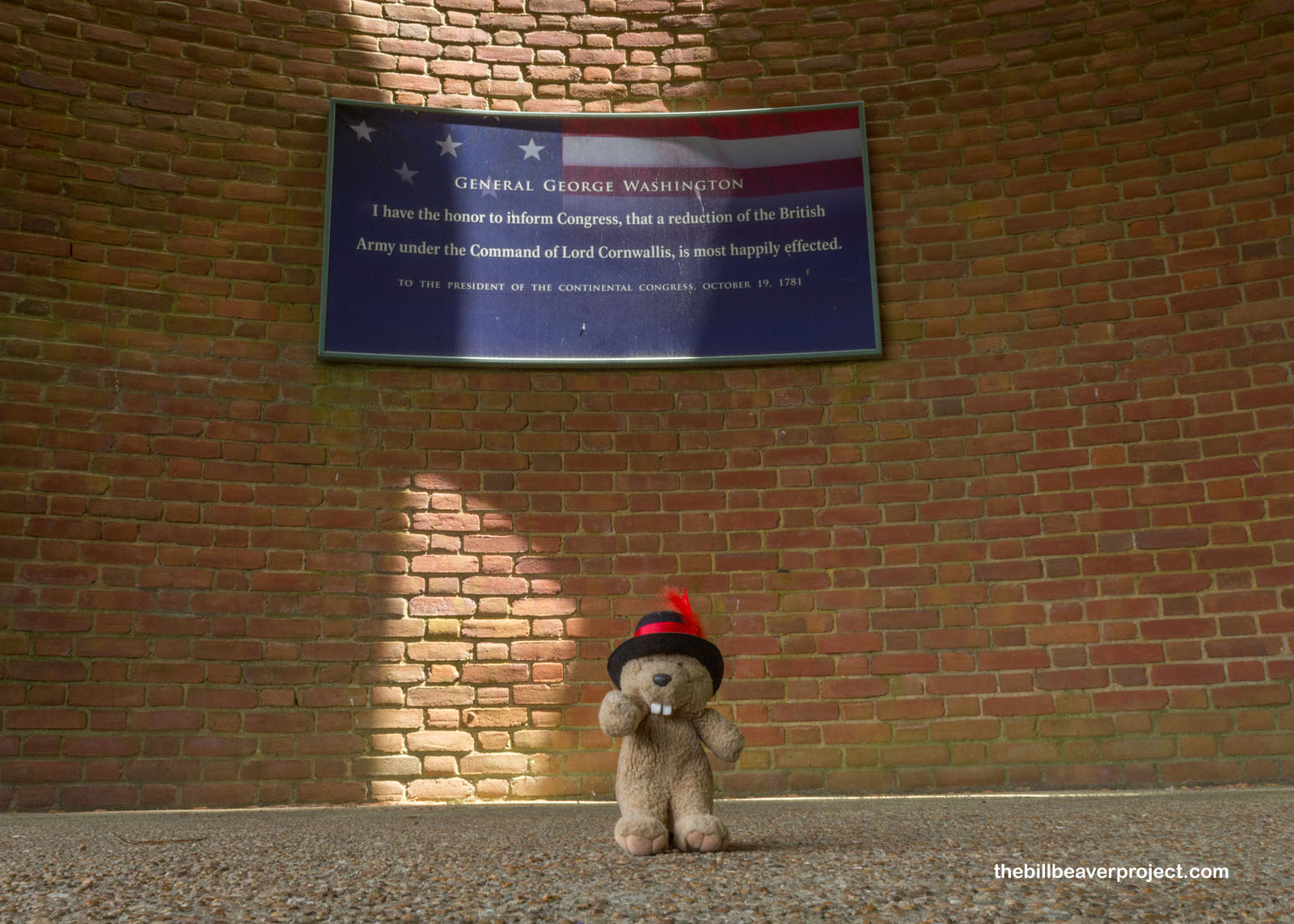 |
The British troops originally held up a white flag on the 17th, but it took two days of negotiating terms before the surrender became official on this field, known today as Surrender Field! Here, the British and German troops laid down their weapons in a long line that was watched by huge crowds of spectators! Lord Cornwallis did not attend, owing, he said, to being suddenly ill, so he had Charles O’Hara lead the surrender instead!
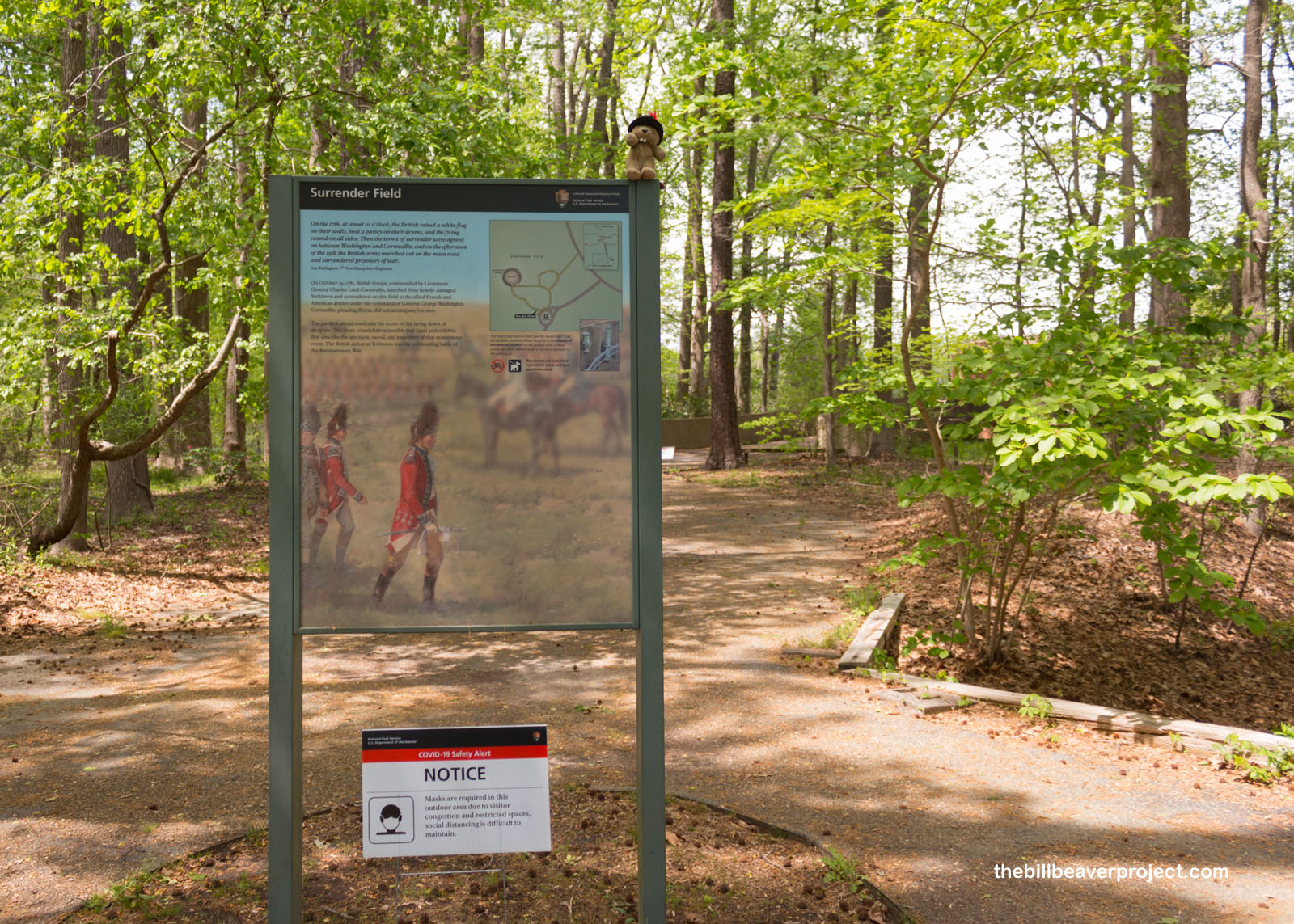 |
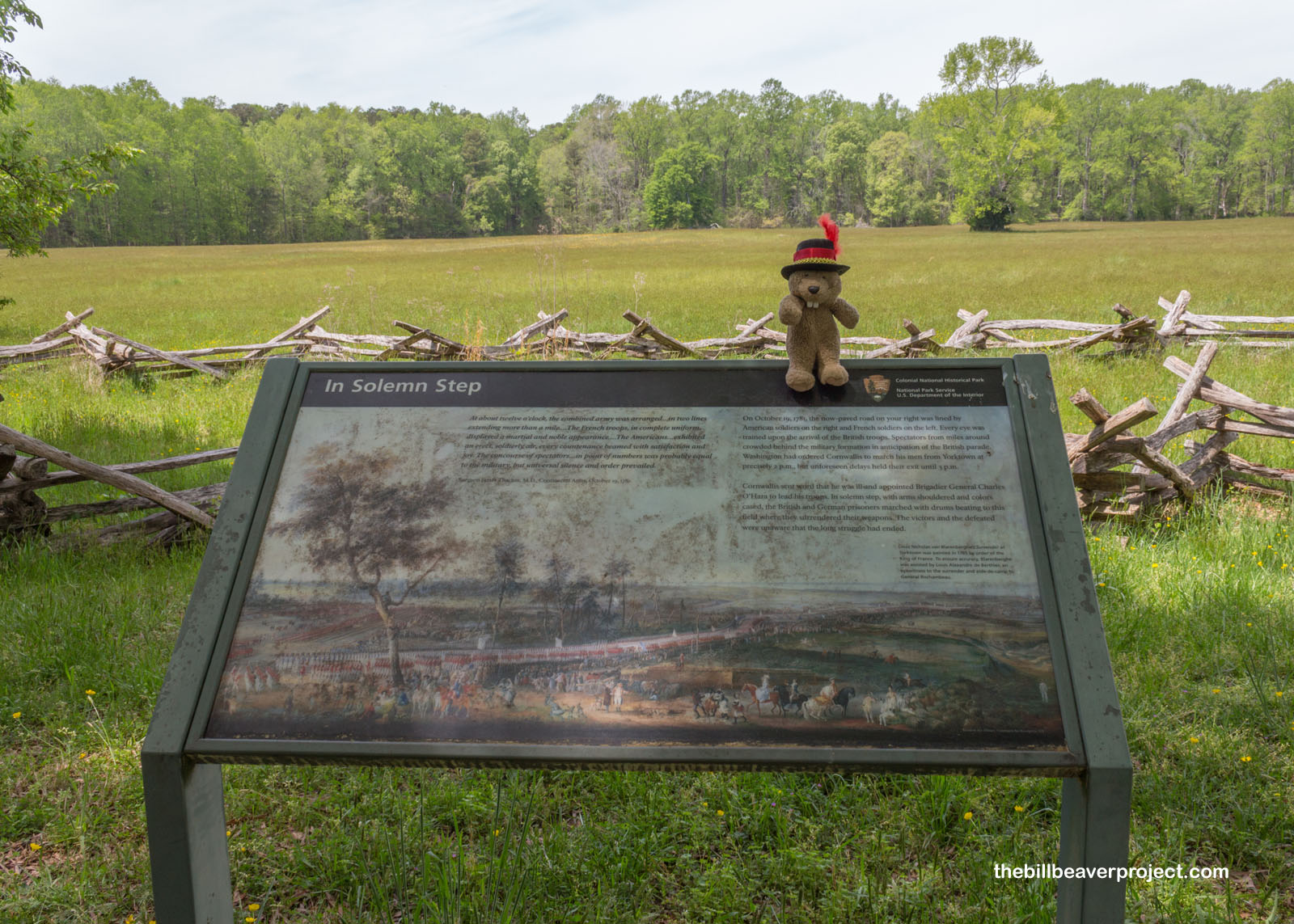 |
Some of the 244 confiscated British weapons were still on display in a circle around the pavilion at Surrender Field! These guns, howitzers, and mortars were in remarkable condition, given the amount of time that has passed since they were last fired!
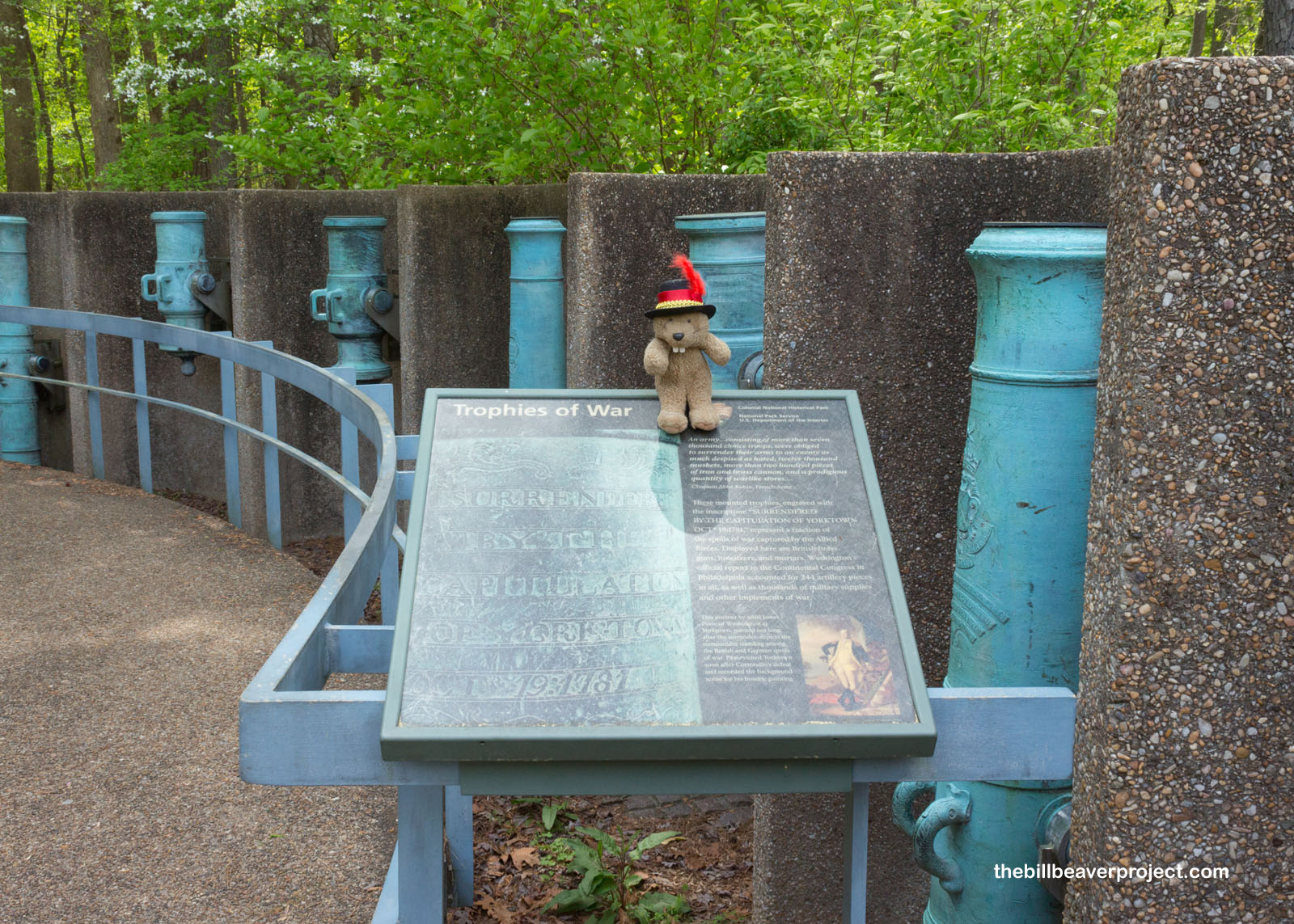 |
At about this point, I got greedy in my explorations, and I figured if I left now, I could make it all the way down to Kitty Hawk and see the Wright Brothers National Memorial before it closed. There was just one thing in the way of that goal: an entire national monument! Fort Monroe National Monument, to be precise, awaited me after some particularly frustrating bridge traffic leading into Hampton, Virginia!
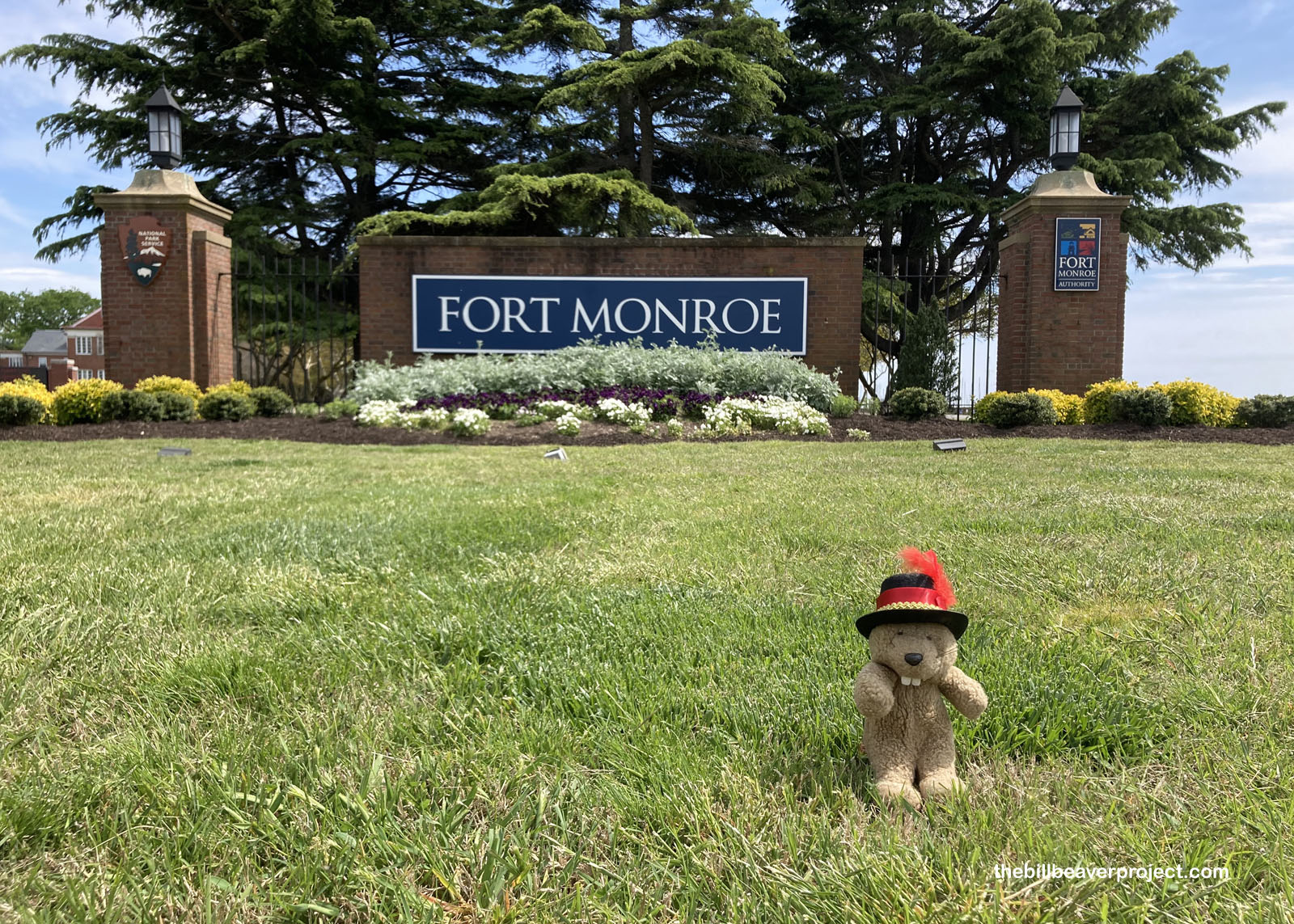 |
Fort Monroe only opened to the public about ten years ago and became a national monument on November 1, 2011! Before that, it was an active military installation all the way back to 1819 when it was named for then-president, James Monroe! It was built in the aftermath of the War of 1812 to protect the Hampton area, which the British had burned, and the mouth of Chesapeake Bay!
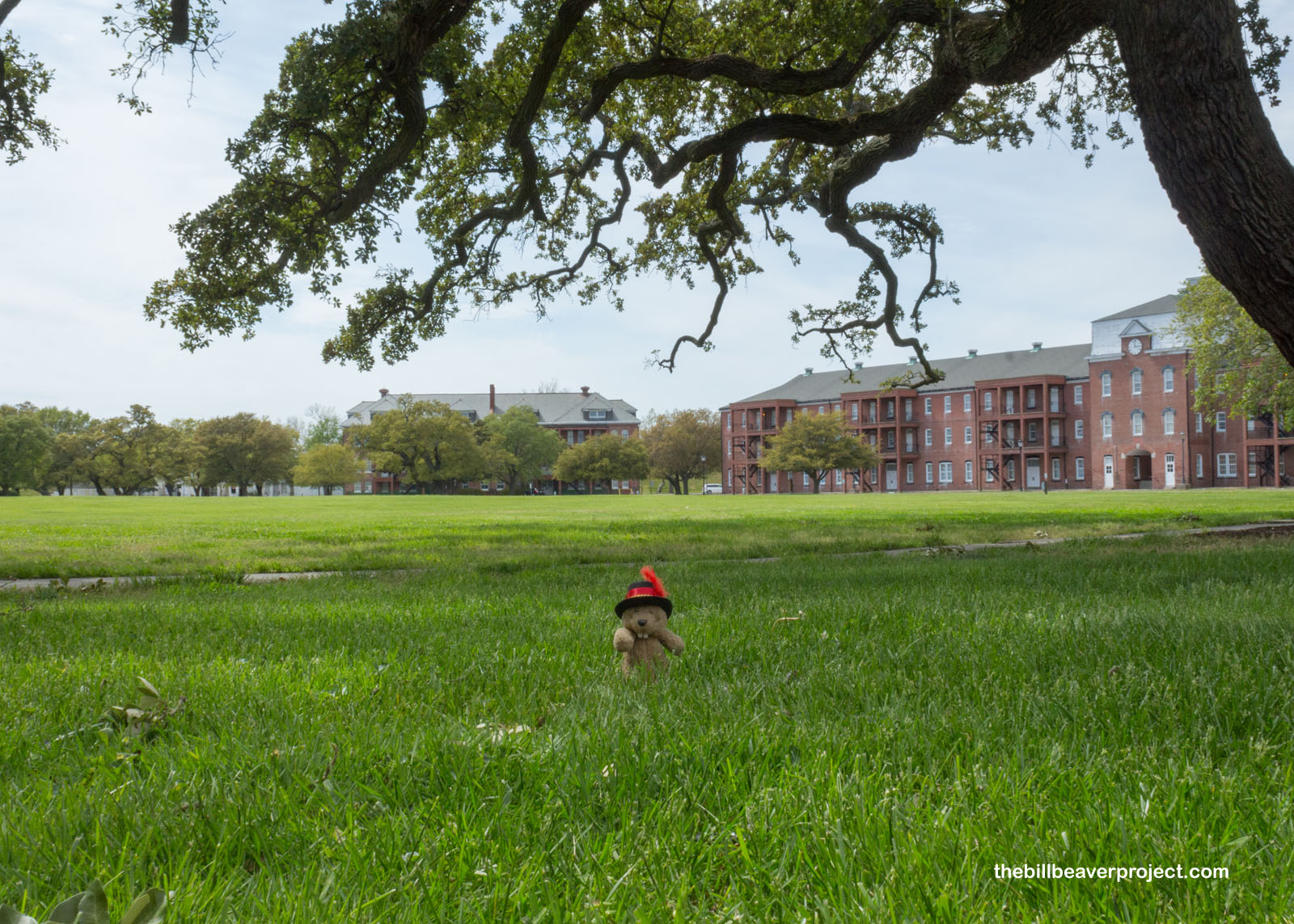 |
Called a “Third System” fort, it was designed to be self-sufficient and siege-resistant with its own water supply, barracks, and hospital, all contained within what could have been a star-shaped fort but really looked more like an amoeba! But don’t let that shape fool you! This fort was so well put together that it remained a Union fort deep inside the Confederacy for the entire Civil War!
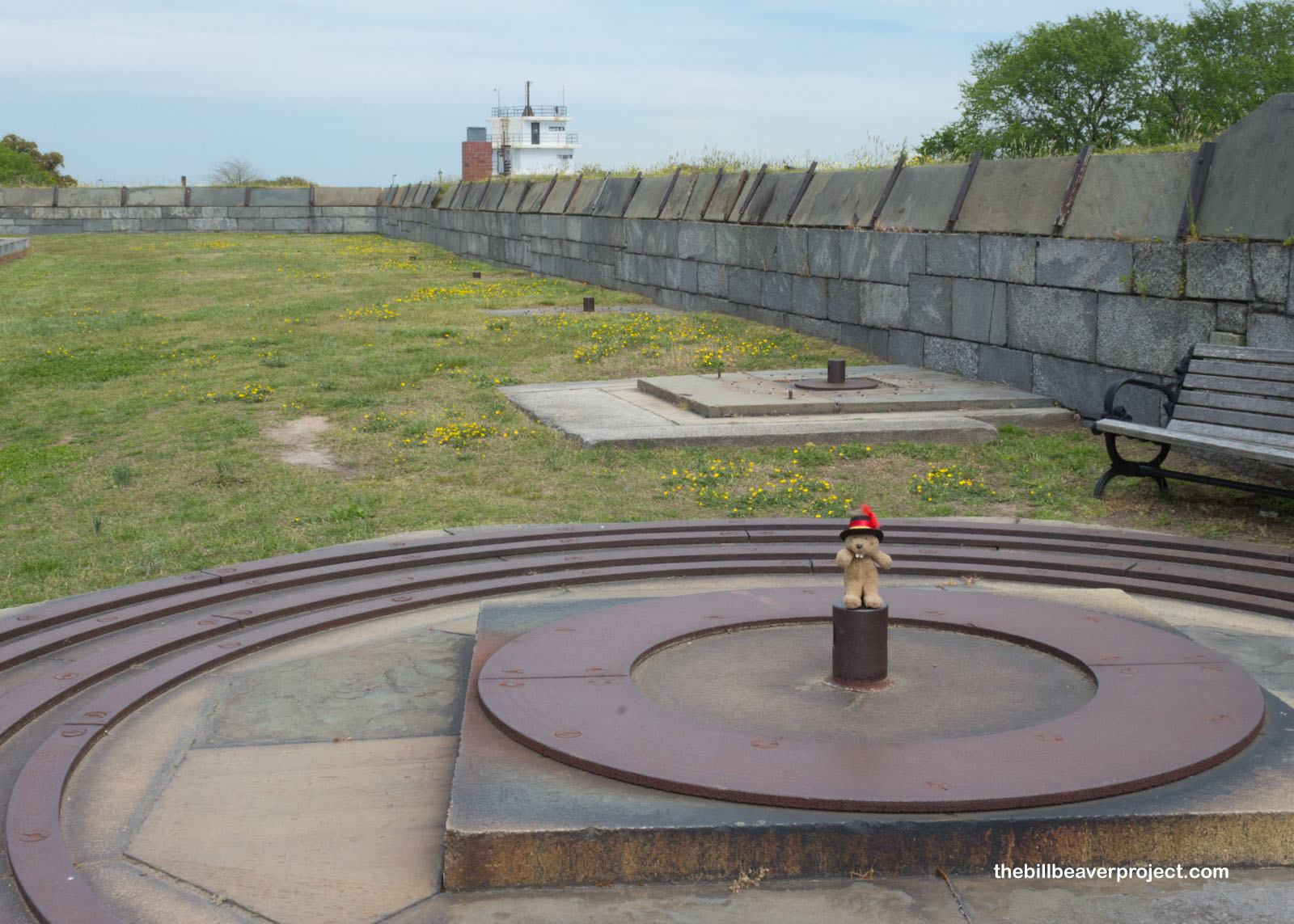 |
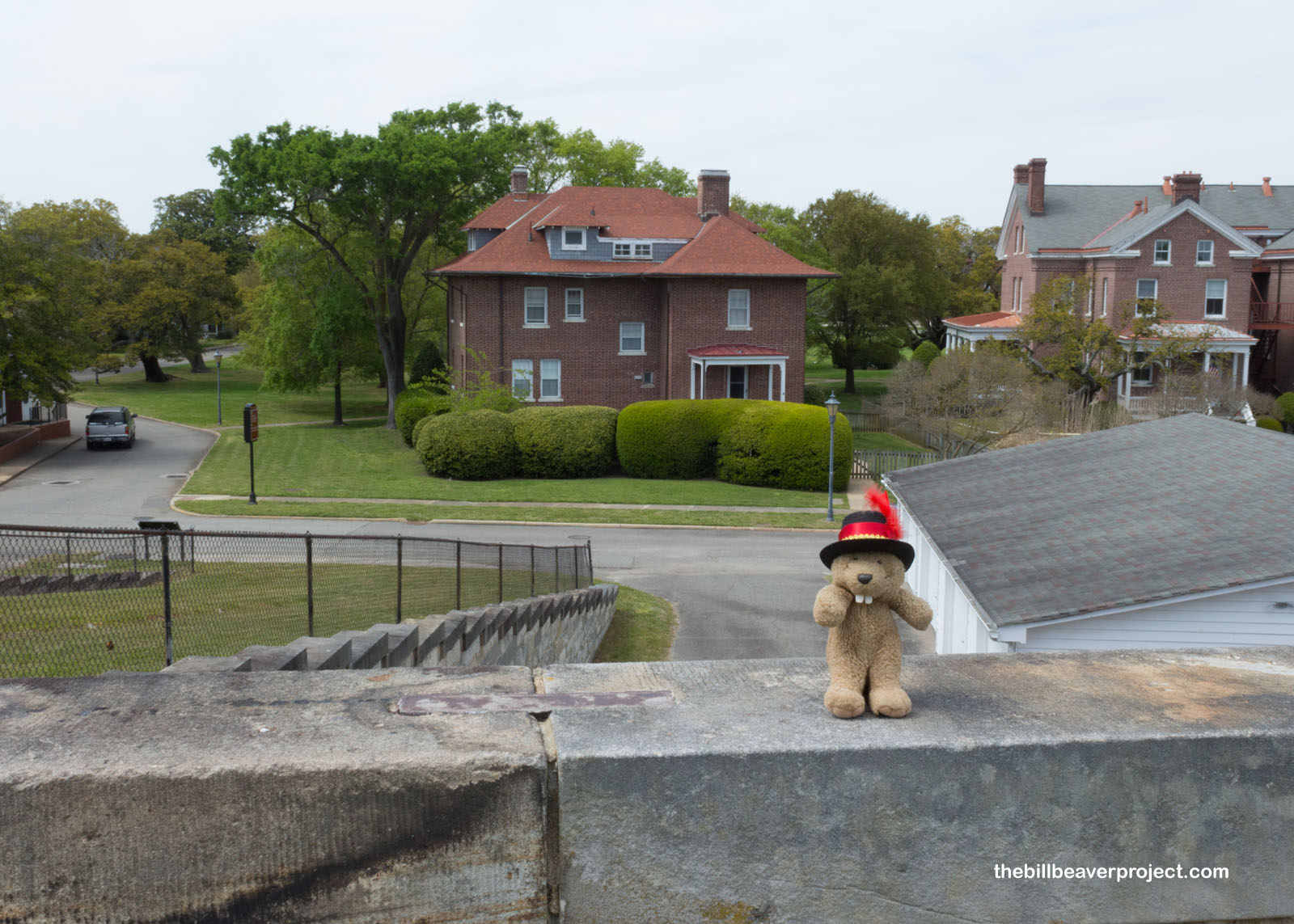 |
It wasn’t just these high walls, constructed by French military engineer, Brigadier General Simon Bernard, that kept it safe from invasion either! Here, they developed the first 15-inch Rodman gun, a cannon that could fire a 300-pound projectile over four miles! They put that to good use, bombarding the Confederate stronghold at Sewell’s Point on the other side of the James River mouth! This big, bad cannon got named the Lincoln Gun after President Lincoln paid the fort a visit in May of 1862!
 |
He stayed in this building right here, called Quarters No. 1, from May 6th through 11th of 1862, reviewing George McClellan’s failures in Richmond while planning the ultimately successful attack on the Confederate naval yards in Norfolk! It’s not every war that a president actively plans out military strategies, so this was the site of something unique in wartime history!
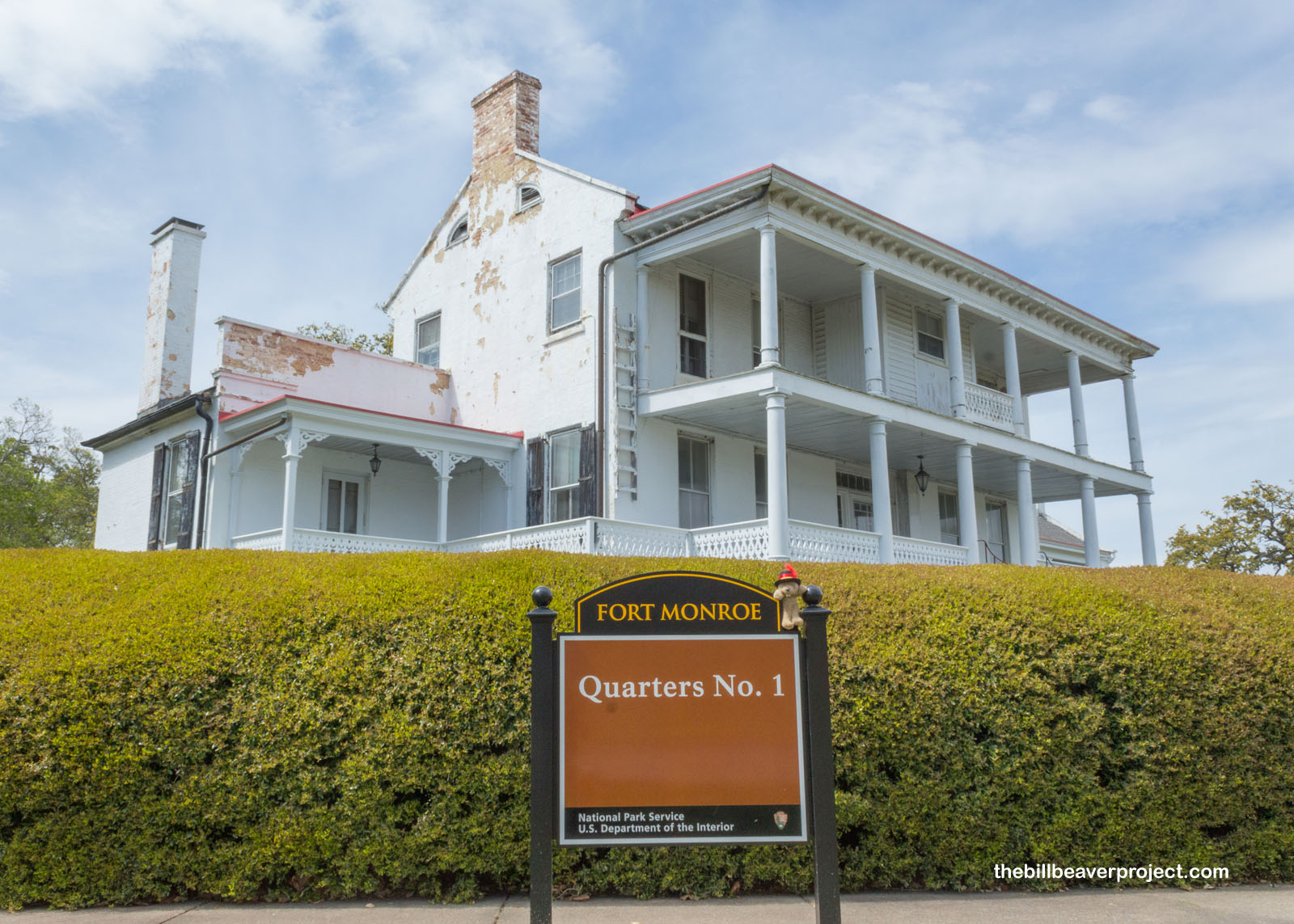 |
And then I spotted the clock striking 3:00, and I knew I had to move! It was an hour and a half down to Kitty Hawk, so if I was going to check one last national park site off my itinerary for the day, I’d have to get a move on!
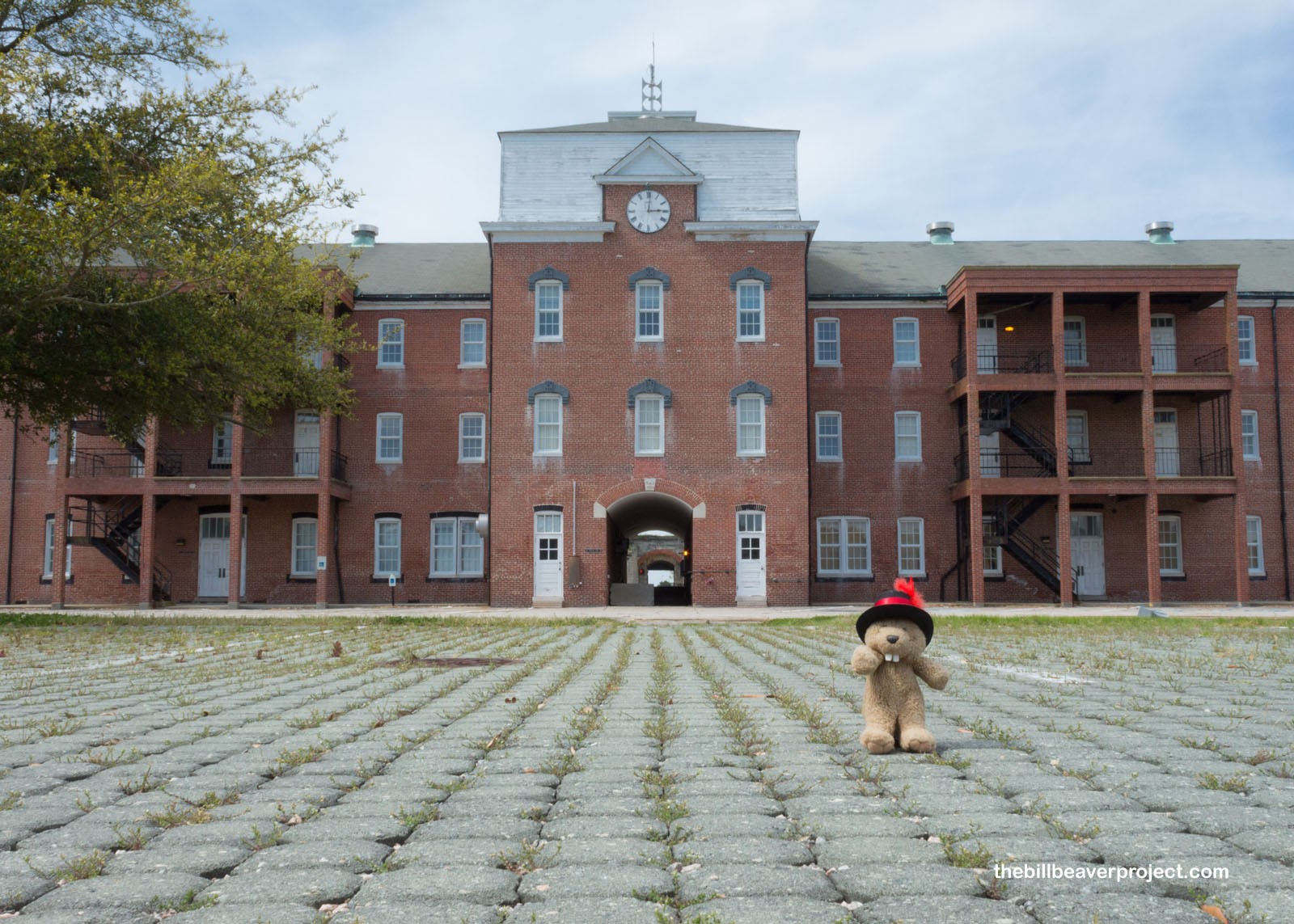 |
An hour and a half later, boy was I off! Wright Brothers National Memorial had posted a 5:00 closing time, but the last admissions were at 4:30 to cut down on stragglers and feet draggers! I was off by a matter of minutes, and I’d booked a hotel in Plymouth, almost 80 miles west! I was super upset by this miscalculation, almost as upset as the penguins had been to get put in the stocks! I’d have to go all the way to the hotel and come all the way back in the morning, which meant reevaluating the schedule for the rest of my trip! To do that, I made my final stop for the night at a place that tied the whole day together: Fort Raleigh National Historic Site!
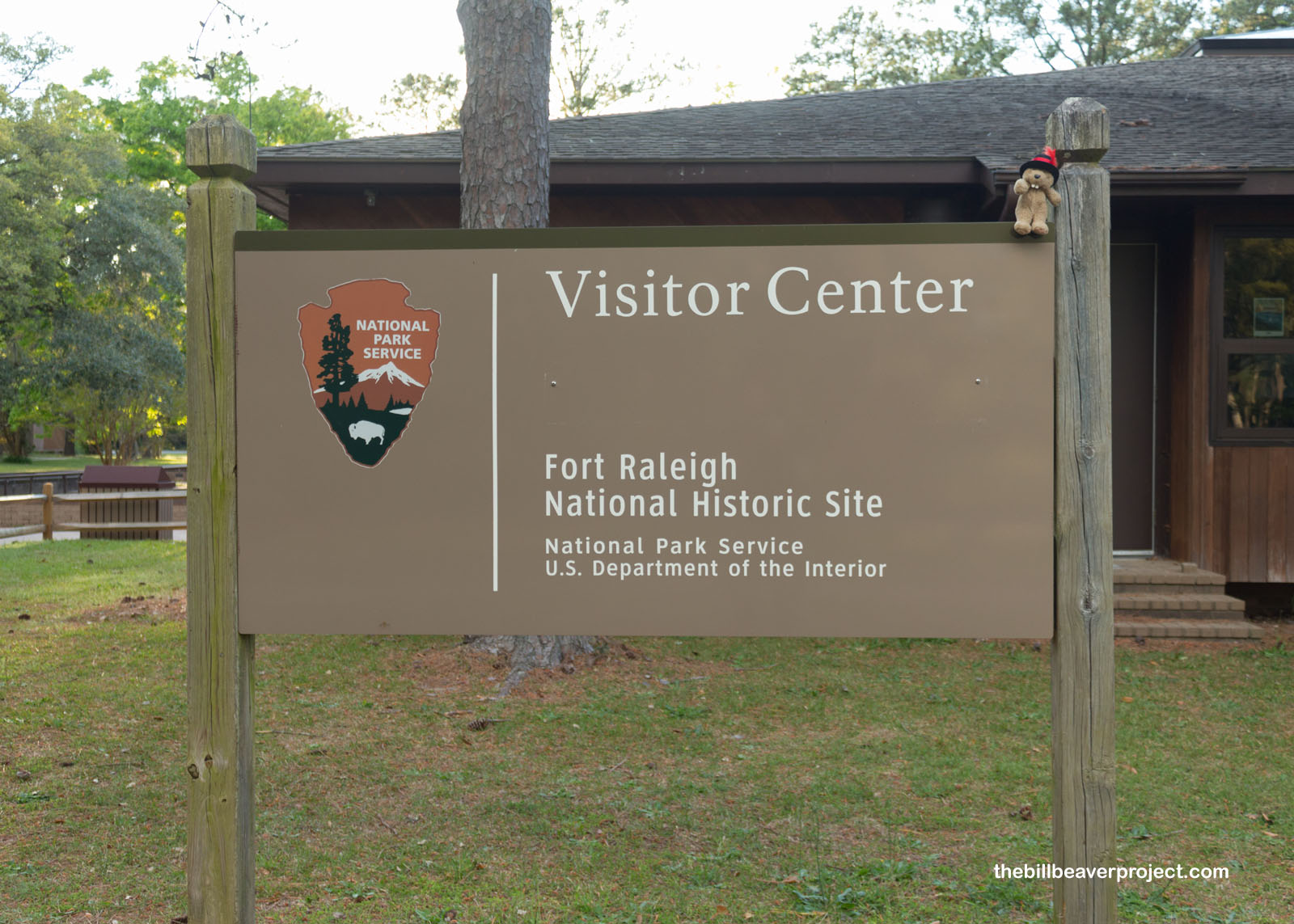 |
While Jamestowne was the earliest permanent English settlement in the Americas, Fort Raleigh and the colony of Roanoke were England’s first attempt at colonization here! Sir Walter Raleigh ordered a military installation in 1585, then a civilian settlement in 1587, and then, by 1590, all 117 residents of Roanoke had vanished without a clue except the word “Croatoan” carved into a tree!
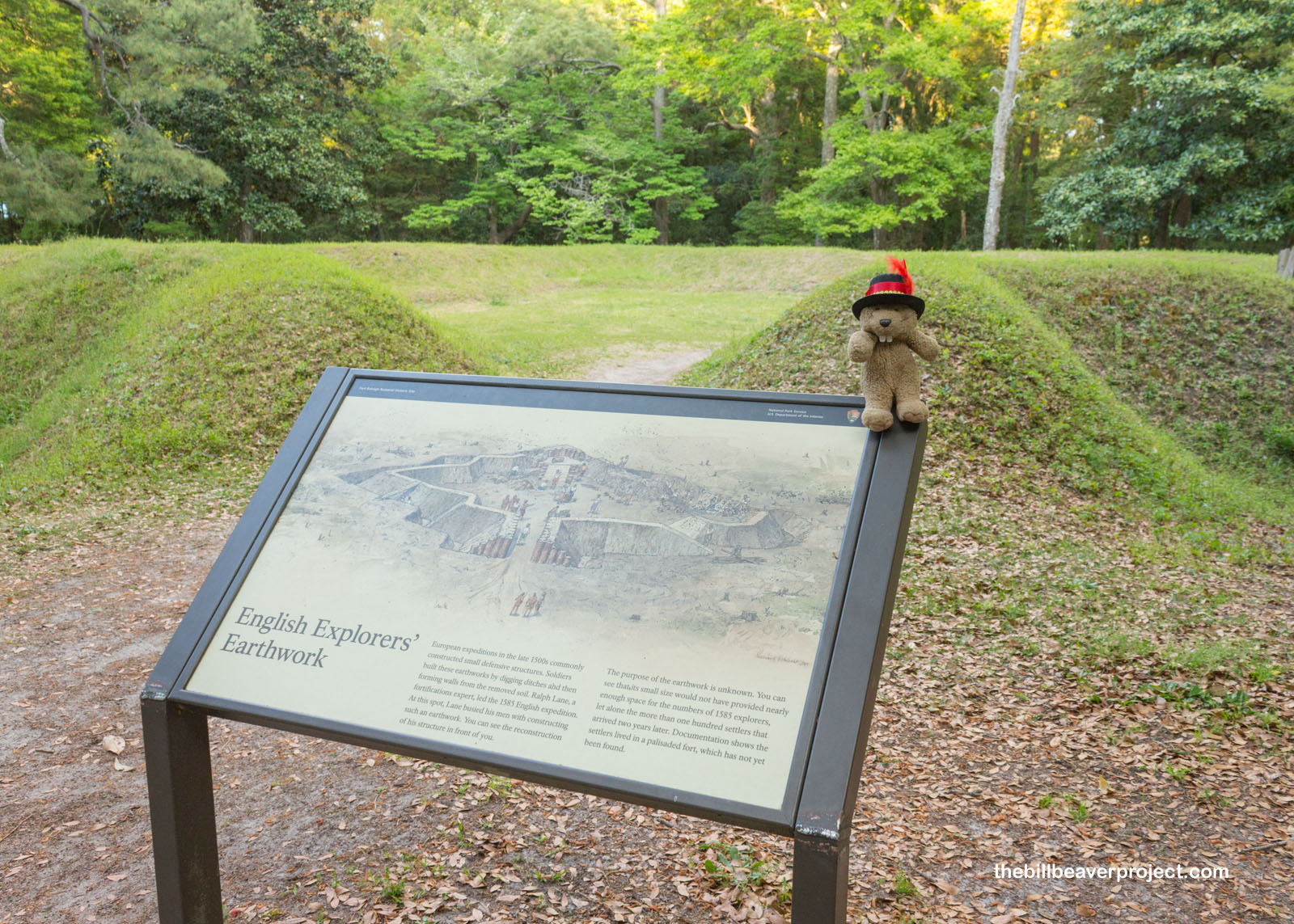 |
A few hundred years later, in February of 1862, Roanoke Island was re-colonized, so to speak, by the Union Army, who took over the Outer Banks! The year before, Major General Benjamin Butler of Fort Monroe had issued his Contraband Decision, which said any enslaved person who escaped into Union territory was free and would not be returned! So, Fort Raleigh, way down here in North Carolina, was a beacon for folks fleeing to freedom and became a Freedman’s Colony with 3,901 residents by 1865! Unfortunately, they were all kicked out after the war when the government decided to return all confiscated land to its previous owners.
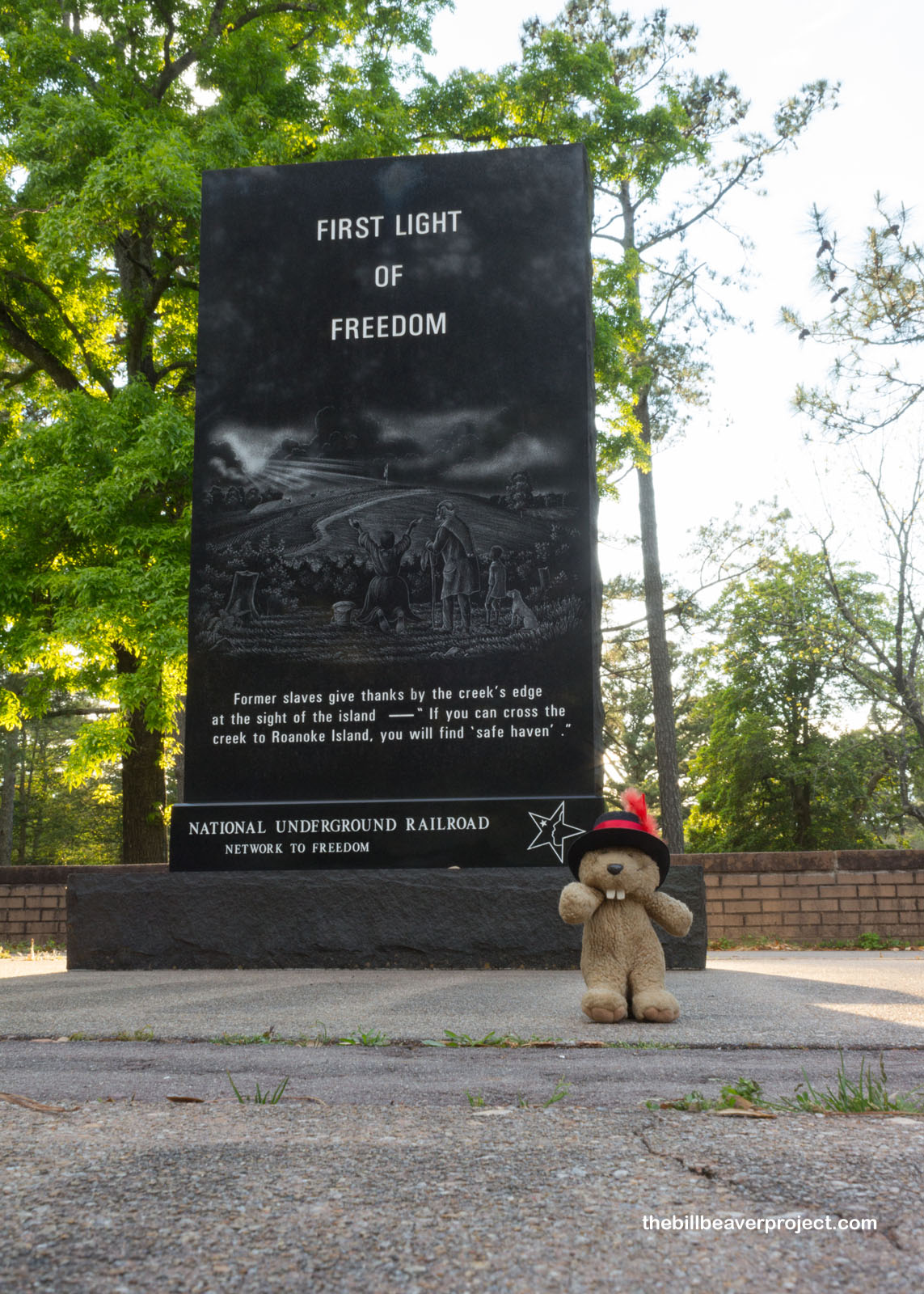 |
Unlike the folks fleeing to freedom, I ended my day fleeing westbound into the sunset! I wasn’t looking forward to getting up super early and charging back here, especially with forecasts of rain on the horizon, but with all those brave folks who passed this way before me, I figured I could muster a little more gumption.
I’ll see you in the sogginess!

 Previous Day |
Total Ground Covered: 226.1 mi (363.9 km) |
 Next Day |
